Yourmag

volume 19 | issue 3 | MAY 2023
Recognized in Spring 2012, YOURMAG ’s goal is to promote knowledge of the magazine industry by giving students the opporitunity to be responsible for all aspects of a monthly lifestyle publication. With an audience of urban college students in mind, members create content across a broad range of topics and mediums, including style, romance, music, pop culture, personal identity, and experiences. YourMag’s overarching aim is to foster a positive, inclusive community of writers, editors, and artists.

2 | YOURMAG
ISA LUZARRAGA Managing Editor
LILY BROWN Creative Director
EMMA CAHILL Editorial Director
Jennifer novo Asst. Editorial Director
BIANCA LUND Co-Head Stylist
JULIA MAGDZIAK Co-Head Stylist
ANNA BACAL PETERSON Asst. Head Stylist
EYIWUNMI AJAO Photo Director
ALEKS CARNEY Art Director
CAMRYN CIANCIA Editor-in-Chief
HAILEY KROLL Co- Head Designer
Willow Torres Co- Head Designer
KATHERINE ASSELIN Co-Asst. Head Designer
TÉA PEREZ Co-Asst. Head Designer
RACHEL TARBY Copy Chief
SOPHIE BOYCE Asst. Copy Chief
SARA FERGANG Head Proofreader
FIONA MCMAHON Co-YMTV Director
SOFIA VERANI Co-YMTV Director
SEBASTIAN OLIVO Assistant YMTV Director
NIRVANA RAGLAND Diversity Chair
ABIGAIL ROSS Romance Editor
GIGI SIPIORA Style Editor
LAUREN SMITH Living Editor
KATHLEEN NOLAN A&E Editor
ELLYE SEVIER Asst. A&E Editor
ganDHARVIka GOPAL Marketing Director
SOPHIA ROSSETTI Web Editor
ELLIE BELCASTRO Social Media Director
Copy editors: Joei Chan, Fiona Murphy, Eden Unger, Sophie Hartstein, Sofia Mendes, Virginia Clarke, Sabrina Lam, Kenna Blume, Emmy Mulvena, Lynn Vecchietti
designERS : ALLISON HALLAK, CHERIE LAROCHE, LIBERTY HENRY, Camryn Ciancia
Proofreaders: Payton Montaina, Alex Alvarado, Vivian Nguyen, Kayla Iwano, Callie Liberatos, Catherine Kubick, Maegan Marshall, Izzie Claudio, Aleks Carney, Jennifer Novo, Alex Vassilopoulos, Camryn Ciancia
volume 19 | issue 3 | MAY 2023
YOURMAG | 3
CONTENTS
ROMANCE
DON’T TELL ME HOW TO LOVE MYSELF OUT OF MY LEAGUE
GEN Z FAIRY TALE: TIK TOK GAVE ME MY GIRLFRIEND SEX ADVICE

EDITORIAL
FEMME FATALE
THANK YOU, I GOT IT FROM MY MOTHER IS THIS SHIRT GAY ENOUGH?
DEPOP RESELLERS: FRIEND OR FOE?
STREET STYLE
EDITORIAL
the LAST MAN ON EARTH diaries of a solo traveler
YOUR LIFE IS NOT A MOVIE
WHY DO I HATE MY BIRTHDAY

YOUR PLACES
EDITORIAL EDITORIAL
PRINCESS PEA
I HAVE A PROBLEM WITH TRUE CRIME
SUCCESSION: EMBRACING THE FICTIONAL ANTI-HERO THE LOST ART OF A QUIET THEATER CHRONIC CASE OF IPHONE FACE CHOOSE YOUR OWN PATH STRIKEOUT
KATHLEEN NOLAN CAMRYN CIANCIA
ABIGAIL ROSS
gingham grooves: songs for a picnic three things you’d bring to a deserted island susie-jane wilson
ARTIST STATEMENT Y.MP3 YOUR THINGS YM ADVISES ARTS & ENTERTAINMENT STYLE LIVING 6 8 10 12 14 22 24 26 28 30 38 40 42 44 48 56 58 60 62 64 66 74 76 78 80 82 84 4 | YOURMAG
Letter from the Editor


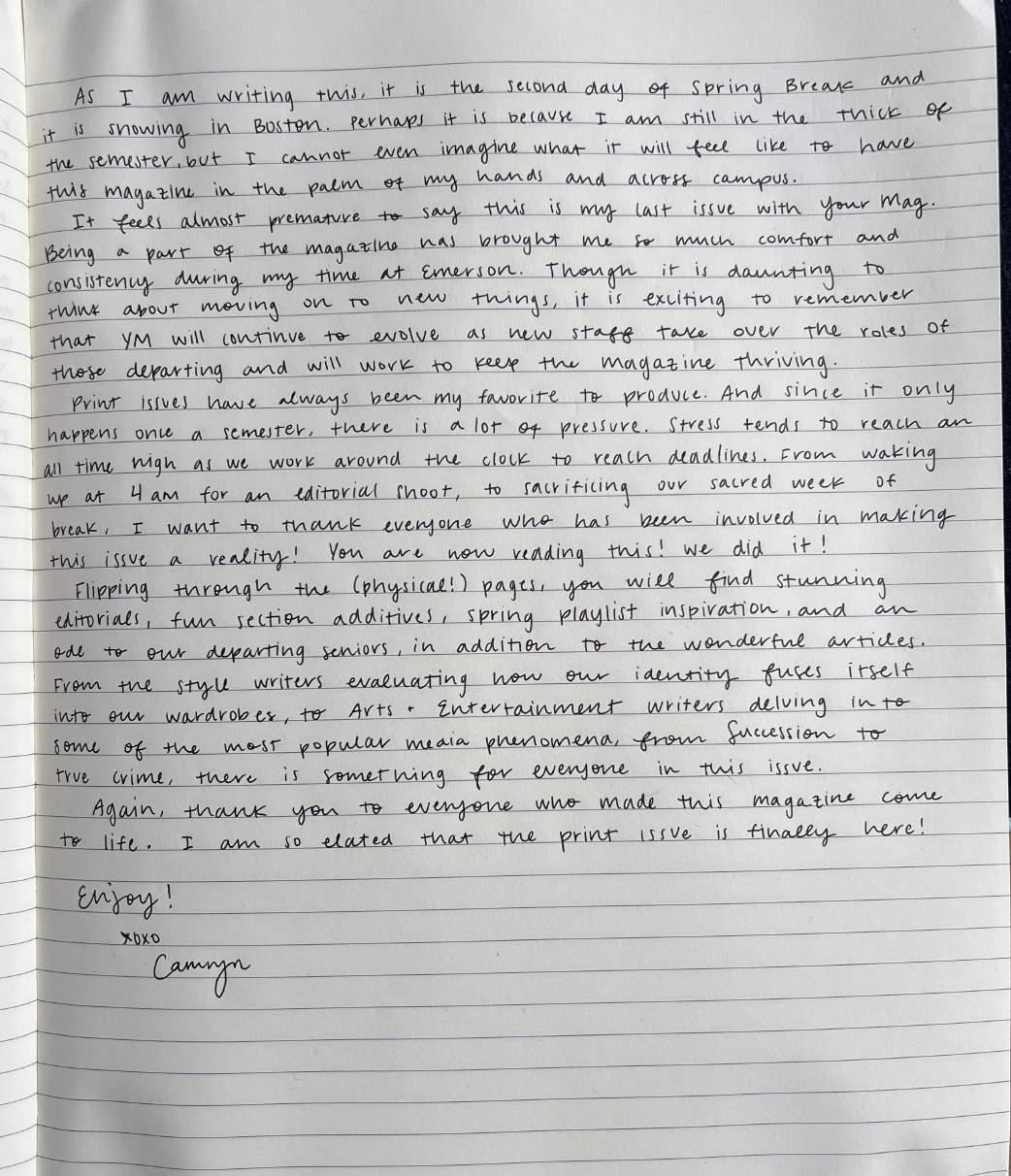
YOURMAG | 5

6 | ROMANCE
Don’t Tell Me How To Love Myself
WRITTEN BY ISA LUZARRAGA ART BY KATE RISPOLI
It’s 2015. Middle schoolers are whipping and Nae-Naeing in the hallways, hoverboards are all the rage, and Hailee Steinfeld has just released her seminal pop anthem “Love Myself.” Finally, a 12-year-old me enters the school, burying my body in PINK sweats, sporting a side ponytail and riddled with anxiety.
“I know how to scream my own name / Scream my name / Gonna love myself, no, I don’t need anybody else.”
Suffice to say, I didn’t resonate with these lyrics back then and still struggle to embrace the ideals paraded by the self-love movement. It’s not that I don’t have love for myself; rather, I am skeptical of the idealistic standards associated with the concept of self-love that makes the pursuit of such a concept daunting and fruitless.
The version of myself in 2015 was struggling with the last gasps of a childhood form of OCD and was overall confused regarding my place in the social hierarchy that is middle school. It felt hypocritical to adhere to this idea of “loving myself” when I hated how my mind worked—how it skewed my perception and constantly inundated me in self-doubt.
While I’ve learned to mitigate my anxious tendencies and overachiever status as a 20-year-old, I still struggle to accept all the parts that make me, me. Part of my “self-love” journey has been realizing that that’s okay. Giving yourself grace is undoubtedly an act of self-love. I don’t want to misrepresent my feelings toward myself by screaming that Hailee Steinfeld song or declaring that I unequivocally love myself to everyone I know. I truly believe that self-love is an ideal we can, and perhaps should, strive for. However, we shouldn’t put pressure on ourselves to fully achieve this ambiguous accomplishment of self-love.
“I take it nice and slow, feeling good on my own…”
Besides this all-or-nothing attitude regarding self-love, I find that the altruistic intention of loving yourself is often warped in its application. Namely, this pressure to express self-love can be rooted in harmful notions of gatekeeping and scorekeeping. Related to this is my conviction that the self-love movement is, perhaps subconsciously, a patriarchal mechanism designed to incite competition among female-identifying individuals over who can “love” themselves the most.
When you think about it, this innate urge among women to prove our worth or compete with others is grounded in our upbringing and prevailing cultural values. The juxtaposition is kind of ironic. We are told to love ourselves and embrace all of our flaws by the same people who
reinforce the historic minimization and sexualization of women. It makes sense that we might find refuge in throwing around these notions of selflove, keeping score of who is doing so “best.”
This is not to discredit the people who express their self-love with purely positive intentions, whether to motivate others or simply be their happiest selves. My qualms reside in the often subconscious motivation behind an expression of self-love, this idea of “one-upping” others by flaunting your remarkably intact self-esteem. Social media is rife with this sort of content.
Typing the phrase “self-love” into TikTok results in hundreds of painstakingly edited videos depicting morning workout routines and homemade matcha. Once again, not dissing anyone who is proud of their healing process. But in a feed full of aesthetic clips and cheesy affirmations, how can we tamp down our inner cringe and truly believe that these practices yield results? By comparing our amount of self-love or self-affirming practices to someone else’s, how can we truly drown out the noise and actually do the work?
“I’m gonna put my body first / And love me so hard ‘til it hurts”
There’s a reason why “self” is in the word “self-love.” Every individual has a unique relationship with themself and believing in the existence of a universal set of guidelines bound to heal that connection is short-sighted. To that end, I am in no position to tell someone how to love themselves. I do believe in being brutally honest with yourself about how you view yourself, realizing that it’s okay to acknowledge the aspects of yourself that you don’t like. Through your introspection, perhaps you realize that these “flaws” are rooted in personal bias or maybe you identify aspects of your attitude or interactions with others that you want to improve. Whatever the result, reflection, however uncomfortable, can reveal your true feelings toward yourself.
This acknowledgment lays the foundation for more meaningful practices to better your relationship with yourself. If you find solace in listening to others’ self-love advice, by all means, continue. Just remember that ultimately, you are the only one who can make significant changes in your self-relationship.
So please, scream your own name. Hype yourself up in the mirror if that’s what helps you. But if I or others don’t feel like doing the same, just know that we’re still thriving and striving to love ourselves every day. YM
ROMANCE | 7
Out of My League
WRITTEN BY KIRA SALTER-GURAU ART BY LILY BROWN
The D.U.F.F.: Designated Ugly Fat Friend. “Every group of friends has one... and if you don’t know who it is chances are, it’s probably you,” the beloved Robbie Amell said through his furrowed eyebrows in 2015, as I flipped off the TV, heaving a sigh heavier than a 13-year-old should be capable of. I determined that I was the D.U.F.F. I thought I was the ugliest person in my friend group. Call off the search parties! It’s ok, we’ve found her! She was here all along! At the end of the movie, Bianca, the mid-sized girl (gasp!), ends up with Robbie Amell, the hottie jock with a waistline so accentuated, you could replace his slutty little waist with the first letter of “victim-blaming.” The credits roll like a bulldozer, with silly bloopers playing on the sides like grainy childhood home-videos. If you haven’t watched the movie, here’s all you need to know- at some point Bella Thorne shows up and says, “hey fatso, get away from my boyfriend!” The rest is a blur. Oh Bella Thorne, you’re so relatable! Once you were singing about how you needed Adderall and now you show your biddies to old men online. Sending love. Moral of the D.U.F.F.: just because you’re ugly, doesn’t mean you can’t have a good personality.
About a week ago, this movie popped up on my radar again when I had a date planned for the weekend. I was at my brother’s house over in Allston, bringing him some zero-sugar banana bars my mother had shipped to Boston, and he asked to see what the girl looked like. “Oh shit, nice work!” he gawked and raised his hand to high-five me like we were baseball players. In the second photo on her feed- she glanced sheepishly at the camera over her shoulder, her long straight hair whipping around in the wind, her outfit revealing her midriff and the beautiful city of Boston, blurred behind her. She is very attractive—conventionally attractive. I thought back to the end of The D.U.F.F. when Robbie and Bianca swap saliva atop some kind of boulder in the middle of the forest. How wrong it felt to watch. He’s so hot! She’s just not as hot as him!
My brother and I kept chatting but our high five kept echoing in my ears. Nice work. Nice work, me, you’ve won a date with someone attractive! Success! This doesn’t happen often so take this when you can get it! I felt gross and wanted to wash my hands off. This poor girl didn’t deserve to win a prize, one, and two, why was I some kind of schlumpy bidder, trying to get a date with the prettiest girl in town? I’m a size 16, my boobs do not swoop up, my jawline is like the part of the baking process when the dough hasn’t been put in the oven and I have the best kind of nose: a Jewish one. It’s got a sick, nasty curve, and I’ve taken the time to learn to love it. I’ve taken time learning to love myself.
What if people who are conventionally attractive don’t understand how I’ve had to learn to accept myself in the eyes of others in addition to
myself? I don’t aim to minimize anyone’s insecurities or struggles. I am also only referring to accepting my bigger body. Someone with a smaller figure may not understand all the ways that I’ve learned to reshape how I see myself through the eyes of the public. I can’t even begin to understand people’s lives and how they’ve learned to embrace themselves, their bodies, bellies, their abilities, disabilities, their skin color, skin type, height, hair and noses when there’s a whole industry out there telling them they look the wrong way. I’ve taken what God’s given me (in this case, God is Joseph Gordon-Levitt in yoga pants) and seen it in a way I consider worthy-of beauty and attraction. I must do that when there’s media being produced like the D.U.F.F., spreading the idea that there is some category for people who are just uglier than the rest who need to work a little harder to achieve the love of the “conventionally attractive.”
People have the capacity to learn and love people dissimilar to themselves but I, along with many others, have a hard time opening myself up to that. Impressionable little, baby tweens take something like the D.U.F.F., meant to be satirical, to heart. Someone ought to have slapped me on the wrist and stunted that movie from implanting and spreading through my mind. It has grown roots now and flourished like fungi, spreading around my underground brainforest, traceable and unwieldy, powerful and gilled like a mushroom. These little mushrooms pop up every time I see someone who looks like they’re coupled with somebody out of their league. Some examples in movies: Adam Sandler and Salma Hayek. Adam Sandler and Jennifer Anniston. Adam Sandler and Drew Barrymore. I could go on. Something innate within me wants to split up these gorgeous people from Adam Sandler. Adam Sandler is beautiful; what’s wrong with me?
Somewhere there is a sweaty man in an office in LA desperately trying to convince everyone that beautiful people should be with beautiful people and ugly people should only dream of attaining that kind of glory.
There was never a second date with that girl. We didn’t vibe that well. She laughed at everything, and I didn’t think anything was funny. You gotta be funny if I’m gonna like you. You can have a face so symmetrical that Euclid gives up geometry and goes with his backup career, professional cuddler, but a shit sense of humor is a deal breaker. Attraction is so much more complex than symmetry.
Attractiveness is someone placing their hand on my lower back. Attractiveness is utilizing all love languages. Attractiveness is offering me the booth seat rather than the chair at the restaurant. Thank you. I love sitting on the booth side. I like how it’s cushy and supports my back. I like how it’s across from my date. YM
8 | ROMANCE

ROMANCE | 9
WRITTEN BY DAPHNE BRYANT
ART BY ISA LUZARRAGA
Gave Me My Girlfriend
POV: Your hopeless romantic request for a relationship just went viral. When I posted a silly girlfriend application video on TikTok, I could’ve never anticipated I’d actually get a response—much less four hundred. The online world seemed to think I was something of a catch, and from that video I found my amazing and wonderful partner: Sophia.
Throughout history, queer people have found love in all sorts of ‘nontraditional’ places. In the 19th century, men would covertly convene in places known as ‘molly houses,’ which could be anything from taverns to coffee shops. In the 1980s, many queer women in the community would try to find lovers by placing personal ads in papers, detailing things about themselves and about what they like in a lover. This isn’t much different from what I did in December of 2022, when I put myself out there on TikTok to see if there was someone on the app for me.
However, Gen Z has always lived in the digital era. In the here and now, queer dating has manifested in similar ways to heterosexual and cisgender dating: through dating apps. Grindr, Tinder, Hinge, and Taimi are all popular with the LGBTQIA+ community, but for queer women TikTok has also become a sort of dating app–it even has something called celesbians: TikTok women who like women and generate lots of traction to their videos, whether it’s via thirst traps or informational videos on life as a queer person.

I didn’t necessarily have the LGBTQIA+ community in mind when I posted my application. I was simply single, craving attention, and feeling a little frisky over winter break. But before I knew it, the video was blowing up and the audience was overwhelmingly women loving women. As someone who had recently declared my bisexuality to friends, it definitely felt like a fever dream. I was receiving heartfelt messages, being asked on dates, and consistently getting compliments. Around this same time, I stumbled upon one of Sophia’s videos on my For You page. Immediately, I thought she was gorgeous—pretty eyes, curly hair, and a more masculine aesthetic, all things I’m crazy attracted to—and I shamelessly saved the video to my favorites.
What felt like minutes later, Sophia commented on my video. She’d noticed that I had been viewing her account, and she’d taken it upon herself to do the same.
“I liked how much she loved books, and she seemed passionate about wanting to be an author. And I really admired that. I [even] liked the fact that she wanted to be a passenger princess,” Sophia says in an interview, laughing. “But I genuinely didn’t know we would end up dating. I slid into her DMs because I thought she was cute.”
We exchanged numbers and talked for eleven hours straight. The conversation was so flirty and so fun. “She made me laugh really, really hard. I haven’t laughed like that in so long. She was kind of crazy—in a good kind of way. There were so many different sides to her; I was hooked. It was like a book I couldn’t put down,” Sophia says, reflecting.
I felt the same way. I didn’t know anyone like Sophia, and I was super into her, but there was a part of me that felt like it could never work. We met on TikTok; not only did she have an intimidating following, but I just knew my parents would be suspicious when they found out I was pursuing an “internet romance.” What about all of the modern dangers, such as catfishing? And then there was the matter of me not having been in a relationship for two years, being used to talking stage after talking stage. Who was to say this would be any different?
All of these questions in my head, yet Sophia was determined to meet me in person. She looked up tickets, figured out the timing, and then texted my best friend, and roommate, Kyoko. My suite hosted secret meetings, keeping it hidden from me until the day of. Unbeknownst to her romantic schemes, I was told to let my suitemate, Olivia, into my dorm. But when I exited the elevator, it wasn’t Olivia I saw. It was Sophia, all the way from New York.
I couldn’t believe that she was here, and she was staying overnight. Overjoyed and a little bit nervous, I rushed to fit some of my favorite things into our impromptu weekend together. I took her everywhere from Beacon Hill Books & Cafe to Pick N’ Roll Sushi; she even came to meet my dance friends at hip-hop auditions. We had our first kiss, and everything felt ridiculously comfortable and safe. It was a dream come true.
I was sad to see her go that Sunday, but it wasn’t the end of us. We sent each other Valentine’s Day gifts by mail, and had the cutest virtual date. The next time she came to Boston, she was my girlfriend. Finally!
Long distance isn’t easy, even with such a perfect partner. For spring break, I had to catch a $600 flight. Some nights I cry on Facetime with her, wishing so badly that I could feel her hands around my waist. But we do our best to stay connected; we make playlists for each other, tag each other in relatable TikToks, and call almost every night. I’m also learning that active communication is everything. In the past I’ve repressed so many of my emotions. Not anymore. Sophia is teaching me, every day, how to articulate what I feel, and that what I feel is valid and real. I care deeply for her, and our profound wish to know and cherish each other keeps us going.
Being with Sophia is an adventure, and I’m so lucky to have her. To many more adventures, my love. YM
Gen
10 | ROMANCE
Z Fairy Tale:

ROMANCE |11
ym

seX ADVICE 12 | ROMANCE
Don’t be afraid to incorporate vibrators and other toys into your sex life. Oftentimes, it takes more time for people with vaginas to orgasm, so don’t be threatened if we want to use something to help the process along. Don’t view the vibrator as your opponent, it’s your teammate.
Always listen to your body! Though it may sound obvious, sometimes your body-mind connection isn’t clicking and even though you’re in the mood, it may not feel right physically.
Don’t stress about what others think when it comes to your personal sex life. It might seem daunting to not follow the casual, hookup culture in college, but it truly is okay to forge your own path. Do what you want with your body when you feel the most comfortable. And it does come, don’t worry!
I don’t think you can lose anything by trying something once, so try different things and see what you like (with or without a partner)!
Talk about sex with your friends! It might feel weird at first but it’s a good way to practice communicating what you like and it can be fun to talk about *it* with people you trust.

Listen to your gut–if something feels wrong, it probably is wrong. Do not let other people tell you what feels violating or uncomfortable, that’s up for you to decide. Don’t be afraid to reach out to friends for support if you are uncomfortable by something that happened. If your friends can’t support you, they are not good friends.
Remember that sex is something to be enjoyed, and it should never be tied to feelings of pressure. You are allowed to feel whatever you feel during sex, including changing your mind about what feels good, and it’s super important to make sure you and your partner(s) value this.
ROMANCE | 13
FEMME

FATALE
 DIRECTED BY EMMA CAHILL
PHOTOGRAPHED BY EMMA CAHILL
STYLED BY ANNA BACAL PETERSON
MAKEUP BY SAELA PHILLIPS
MODELED BY MAILEY BAER AND YEA SE CHUN
DIRECTED BY EMMA CAHILL
PHOTOGRAPHED BY EMMA CAHILL
STYLED BY ANNA BACAL PETERSON
MAKEUP BY SAELA PHILLIPS
MODELED BY MAILEY BAER AND YEA SE CHUN


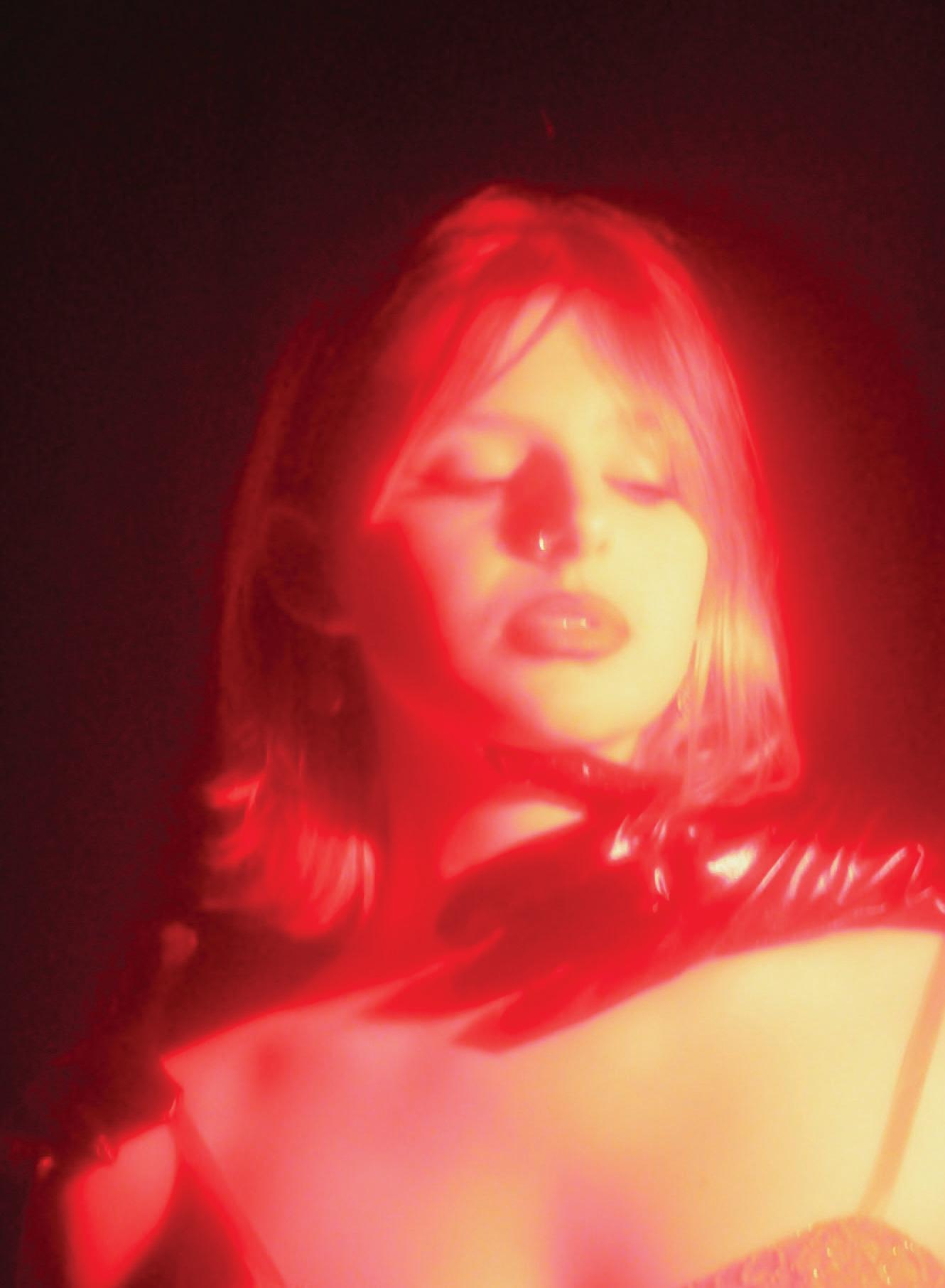



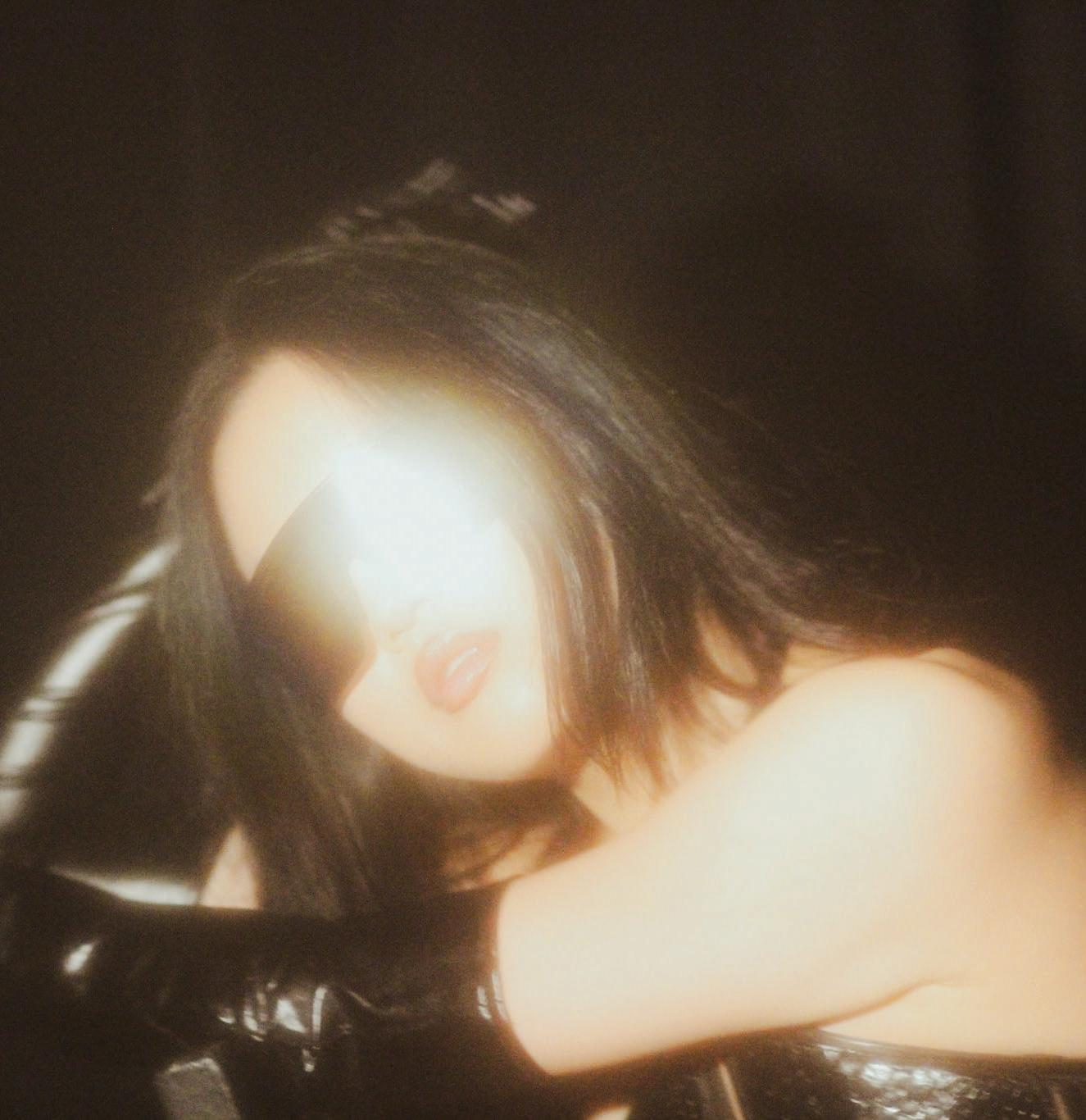



22 | STYLE
THANK YOU, I GOT IT FROM MY MOTHER
WRITTEN BY AYAANA NAYAK
Idon’t know when, but at some point in my life I became the kind of person who takes two hours to get ready in the morning. I think I only started doing this when I learned to appreciate the process—when I started seeing my clothes in textures, shapes, and layers rather than how they made my body look. This was when I started wearing my mother’s old clothes.
I must have been 16 or 17 years-old when they started to fit me, and I took to them immediately. It began with loose shirts and wraparound skirts. They became my staples for beach holidays and lazing around the house. The skirts hugged my curves like a glove and fluttered around my ankles when I moved. They made me feel like I was in an old movie, some heroine who was in a perpetual state of satisfaction. I have pictures of my mother from when she was my age, wearing the same skirts with colorful halter necks, her hair falling loose around her shoulders. The pictures were almost always taken mid-sentence, when her face was the most animated. She looked like someone everyone would fall in love with, and I wanted to look just like her. I still do.
All her clothes were soft—made of light fabrics and earthy colors in traditional Indian patterns. The pants were loose and billowy, or jhabla, as I called them jokingly. But they were the most comfortable pants I owned, and by far the most interesting. It wasn’t easy to style all the colors and fabrics, but I pulled it off. Sometimes I would find a top that matched the exact shade of blue in the skirt, or a jacket that ended just above the waistline of the pants. But black tank tops were my best friends, just as they had been hers. I didn’t always wear her clothes out, at least not every day. They were nothing like the yoga pants and graphic t-shirts that had become the standard in Mumbai’s high schools. I wore her clothes mostly at night, when I was alone in my room and could dress them up however I wanted. I didn’t have to worry about what people would think or where they would be looking. I draped myself in dupattas and flowing dresses, all the while dreaming of a day when I could wear those outfits in public. I think I only felt comfortable enough to do that when I moved to college. For the first time in my life, I was witnessing people wearing exactly what they wanted, no matter the occasion. College is when you figure out who you are and who you want to be outside of the spaces you grew up in. I wasn’t worried about being overdressed, all that concerned me was feeling good in the things I wore. Boston wasn’t quite warm enough for Mama’s thin cottons and linens, so
ART BY SOPHIA ROSSETTI
whatever clothing of hers I couldn’t wear, I made up for with jewelry. Her earrings were my favourite, with intricate patterns of brass and silver that I could pair with any outfit. There were the ones with the teardrop pearls, that I wore with anything soft or light. There were the dangly hoops with the brass beads that I wore to accentuate my neck. There was the silver choker with the black stone that I only wore with her thick silver hoops. I switched around between a dozen pieces, day in and day out. So every time someone would stop me and tell me they liked my earrings or necklace or rings, I’d reply, Thank you, I got it from my mother. It felt good to carry something of hers with me wherever I went. They were like little pieces of home that reminded me who I was, even in this foreign country. My mother, with her clothes and style, was a part of me. I became proud of that and realized there was no reason to hide it.
When I went back home over the summer I wore the things that made me happy. I also bought things that made my mother feel I was turning into her. You’re becoming exactly like me, she’d tell me. I’d laugh and say, rubbish. But I knew it was true. She started gifting me the kind of jewelry she would have worn herself. Even when she bought things that were meant for her, she would offer them to me first. We’d sit together on her bed as she laid out everything from the locked drawer in her cupboard, her tijori. All the gold and silver and pearls she’d amassed from years long before I was born. When I picked out the things I liked, she’d smile and point out the ones that had belonged to my greatgrandmother. From everything Mama and my Nani had told me, I would have loved her. She coordinated everything, from her slippers to her Sari to her nail polish. According to everyone, she had been iconic. One of my most prized possessions is my great-grandmother’s silk robe. It’s beautiful and dramatic, just as she had been. Every time I wear it, I channel the generations of women who made me who I am. What’s mine is yours only, Jaan, says my mother whenever I ask to take something. Who else will everything go to?
When I’m in Boston I Facetime her in the mornings while getting ready for my classes. She watches as I assemble my outfits and then hold up different pairs of earrings to my face. Which ones, I ask, unable to decide between the turquoise stones or the purple beads. She tells me to wear the blue as I begin spot concealing my face. I explain my routine to her, finishing my eyes with the kajal I stole from her. She laughs and once again tells me, That is exactly what I was like. YM

STYLE | 23
Is This Shirt Gay Enough?

24 | STYLE
WRITTEN BY GEORGIA HOWE PHOTOGRAPHED BY VIBHA SHABEEN
Beyond sticking rainbow pins on backpack straps and donning pride flag t-shirts, queer people have been communicating their queerness through clothing for decades. Queer identities are expressed to their communities with clothing through a technique dubbed “queer signaling.” This comes from a long tradition of gay people nonverbally communicating (or “signaling”) their queerness to others through specific stylistic choices. Because openly identifying oneself as queer was not safe (and still isn’t in many parts of the world due to the disproportionate violence queer people face), the LGBTQ+ community has historically relied on more subtle visual signifiers to clue others into their sexuality.
Incorporating specific flowers into fashion has been a mode of queer signaling for many decades. Violets, often pinned on lapels, were used to indicate lesbianism in the 1900s because of their frequent reference in Sappho’s poetry. Similarly, green carnations were worn by queer men after being popularized by the wellknown gay author Oscar Wilde. In the ‘70s, a person wearing a bandana or handkerchief in their back pocket was a way to communicate not only queerness but also their sexual preference as a top or bottom, depending on what pocket they placed it in. These fashion-based signals, while different today, remain embedded in queer culture as a way to safely identify oneself with clothing.

Today, there are many different ways that queer signaling manifests in fashion. The stereotypical “bisexual uniform” consists of Doc Martens, cuffed jeans, and probably a septum piercing. Masc lesbians often don a carabiner and femmes are known for their funky earrings. Clara Livingston ‘23 (they/she) notes that certain items in their closet “feel really queer,” like overalls, carpenter pants, and beanies. Specific articles of clothing like these are used for signaling so frequently that they’ve become intertwined with the idea of queer identity.
While these ways of dressing have stemmed from a tradition of building a sense of community and belonging amongst LGBTQ+ people through fashion, the standards that one has to meet to “look gay” can be incredibly ostracizing. Sophie O’Clair (they/she), is a sex educator and activist whose self-proclaimed style goal is “to look like a gangly teenage boy with cool shoes.” They acknowledge the pressure people face to look a certain way in order to be recognized as queer by people within the
LGBTQ+ community. “I am a femme-presenting person but also use they/them pronouns. If I want people to use my pronouns, I have to dress incredibly “gay” to even be considered as such and possibly get referred to in the right way,” says O’Clair.
A quick search for “how to dress gay” on TikTok produces a mass amount of content with stylizing tips to “look gayer.” While videos like this can be helpful for people trying to communicate their sexualities to their community when they can’t outright say it, it also ascribes a certain aesthetic to gay identities. This aesthetic also often manifests in media through skinny, white, femme bodies, further associating gayness with a singular look rather than representing diversity and difference within the LGBTQ+ community. Making these signal norms within queer fashion creates a hierarchy of standards that queer people have to meet to be “gay enough.” This is not to say that queer fashion cannot be liberating: for many it is.
“I also think dressing gay enough is part of feeling like myself and feeling good in how I present myself. It means
I’m not dressing how I did in high school when I was trying to fit into a very cis/ heteronormative feminine environment,” says Livingston. O’Clair echoes this sentiment: “I will be in Carhartts, bulky Doc Martens, a crop top, and bright pink long acrylics. Being queer allows me to take bits and pieces of different styles that I love and mash them up… it’s liberating and euphoric.”
You wear the dress, the dress does not wear you. This aphorism, often used when talking about fashion outside of a queer context, still applies here. A shirt is not intrinsically “gay” because it is associated with queerness; it is “gay” because you’re wearing it.
Essentially, queer fashion has no dress code. As O’Clair puts it, “the beauty of being queer is not having any labels or boxes to fit into.” Queer fashion is meant to empower and connect the community, not define and pigeonhole it. Queer signaling remains a safe mode of communication, but the styles that emerge from it are by no means binding. Remember: queerness is undefinable, so dress as authentically as you love. YM
STYLE | 25
FRIEND OR FOE?
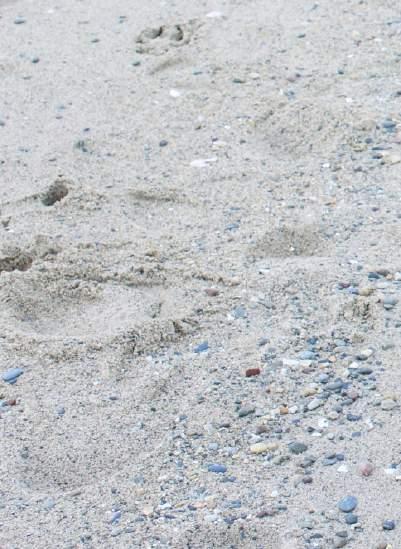 WRITTEN BY LIZ FARIAS
PHOTOGRAPHED BY LIZ FARIAS
WRITTEN BY LIZ FARIAS
PHOTOGRAPHED BY LIZ FARIAS
Making its mark as a staple fashion network, Depop is a social e-commerce website, primarily used to buy and sell pre-loved, vintage, and reworked clothes. Initially, founder Simon Beckerman birthed the platform in 2011 as a way for readers of PIG Magazine to buy items from the young creatives it featured. However, Depop’s loyal Gen-Z and millennial customers have since then transformed this platform into a whole new beast. The phenomenon of Depop resellers and their hyper-curated stores is one that has sparked controversy over the ethics of “flipping” items, buying something cheap to later resell for a profitable value.
Giving new life to pieces that may otherwise end up in a landfill, Depop promotes sustainability. It’s also fun! Unlike Poshmark, a generic reseller site, Depop succeeds tremendously with a young, trendy target demographic. They maintain an aesthetic standard by rewarding top creators and promoting them on the platform as exemplary shops. Their algorithm allows you to find exactly what you’re looking for when you type in certain fabrics and price ranges. A seller can even market their item with niche microtrend labels, such as “whimsygoth”–whatever that means.
Through Depop’s site design, it’s obvious that there is a certain level of fashion knowledge necessary to thrive on the app as a seller. If you aren’t passionate about niche microtrends and taking flawless photos, the algorithm will tank your items. If you’re a clueless buyer, you’re at higher risk of being scammed by a Depop reseller.
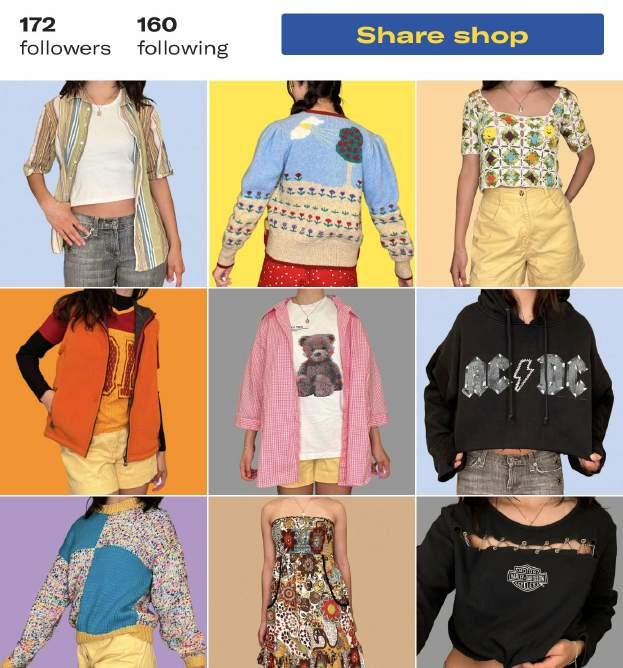
For resellers to have the most successful flip, an item needs to be sourced as cheaply as possible. A huge controversy surrounds this practice, especially when white, affluent fashion influencers go out of their way to shop in poorer neighborhoods. They get plenty of media backlash for stripping thrift stores of all their trendy
clothes that could have otherwise gone to those who shop for necessity. Items that were originally priced at a couple dollars get advertised at retail price on Depop. Additionally, when marketing these items, some resellers are misinformed about product origins, throwing in fashion buzzwords to overwhelm buyers. Vintage! Deadstock! ‘80s! Coquette! In reality, those thrifted jeans could be a fast-fashion pair; it’s really hard to know and not
26 | STYLE
cool to lie.

Growing up shopping secondhand, I’ve learned that resellers ravaging thrift stores of everything wearable is a huge myth. That being said, a privilege of mine is that I live in a Metropolitan area with at least five different thrift stores within a 10-minute radius. Each thrift store I go to rotates their selections daily; meaning if an item doesn’t get purchased within one to two days, it goes straight to a landfill. Goodwill Bins put out clothing for about one to three hours before it all gets dumped forever. Even when the Bins are filled to capacity with shoppers, all the clothing does not get sold. This isn’t for lack of quality or attractiveness of the clothes; it’s simply surplus. While it is strange and disrespectful for resellers to prowl low-income neighborhoods for a good thrift, not all do. Reselling can be a career that supports the livelihood of those who can’t work traditional jobs and need that source of income.
Aja Barber, a Black writer and sustainability activist in the fashion landscape, recently tweeted on March 3, 2023, “It kind of shocks me how unimaginative people are about thrift. The rhetoric surrounding Depop resellers. Like the girl that launched it all, this coat looks like something she’d nab and £12.99 is a price everyone can get on,” and then she proceeds to link the same coat being resold on five different sites, disproving the scarcity of the thrifted item. Other replies linked the same coat as well, stating that Depop resellers are not the problem with enough clothes out there for everyone.

It’s important to note that while desirable, style is not a necessity, clothing is. We all need clothing, and secondhand stores make this plausible. Developing a personal style, however, is an artform that requires time, research, and careful consideration. Therefore, if a hyper-curated resale store is out of your price range, that’s okay. It’s also out of mine, and we can still curate our wardrobes without their business. Many thrift stores have huge discount days and rewards programs for local buyers. I encourage checking those out wherever you live!
So, Depop resellers—friend or foe? As long as they source mindfully and advertise transparently, there is little harm in what they do. YM
STYLE | 27
STREET STYLE STREET STYLE
henry kacik, HE/ANY
How would you describe your personal style in three words?
Layered, colorful, comfortable
Where do you typically get outfit inspiration from?
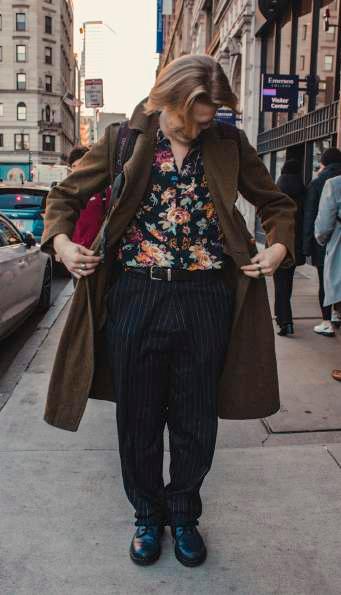

Movies and TV, mostly those that take place in the ‘80s/’90s
If you could only shop at one place for the rest of your life, where would it be?
eBay
Celebrity style icon?
The Doctor from Doctor Who

What are three pieces of your wardrobe you can’t live without?
My big green coat, corduroy pants, loud short-sleeve button ups
HENRY
PhotographED by Eyiwunmi Ajao
28 | STYLE
InterviewED by GIGI SIPIORA
BELLA
bella moller, SHE/HER
How would you describe your personal style in three words?
Nineties, Rock, Witchy

Where do you typically get outfit inspiration from?
Pinterest
If you could only shop at one place for the rest of your life, where would it be?
Thrift stores for sure
Celebrity style icon?
If I’m entirely honest; I don’t have one
What are three pieces of your wardrobe you can’t live without?
My Doc Marten Oxford platforms, rectangular sunglasses, and silver hoop earrings
amaya gonzalez-mollmann, SHE/THEY

How would you describe your personal style in three words?
DIY, eclectic, downtown
Where do you typically get outfit inspiration from?
People on the street! And lots of fashion influencers like @lovejessicablair and @ageorama, and brands like Tyler McGillivary and Vivienne Westwood. If you could only shop at one place for the rest of your life, where would it be?


For sure Goodwill. All of my best pieces are from there!
Celebrity style icon?

I love the way a lot of musicians dress, but particularly right now Beabadoobee’s style is my inspiration. What are three pieces of your wardrobe you can’t live without?
The lace up red boots I stole from my mother, my big leather jacket, and my black Mary Janes!
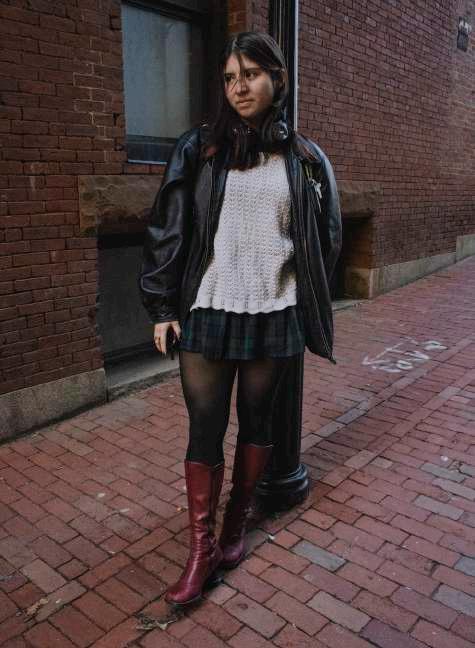
AMAYA
STYLE | 29
THE LAST MAN ON EARTH


 DIRECTED BY LAUREN SMITH, PHOTOGRAPHED BY LILY BROWN, STYLED BY LIZ FARIAS AND JULIA MAGDIZA, MAKE UP BY ANNA BACAL-PETERSON, MODELED BY LIZ FARIAS
DIRECTED BY LAUREN SMITH, PHOTOGRAPHED BY LILY BROWN, STYLED BY LIZ FARIAS AND JULIA MAGDIZA, MAKE UP BY ANNA BACAL-PETERSON, MODELED BY LIZ FARIAS


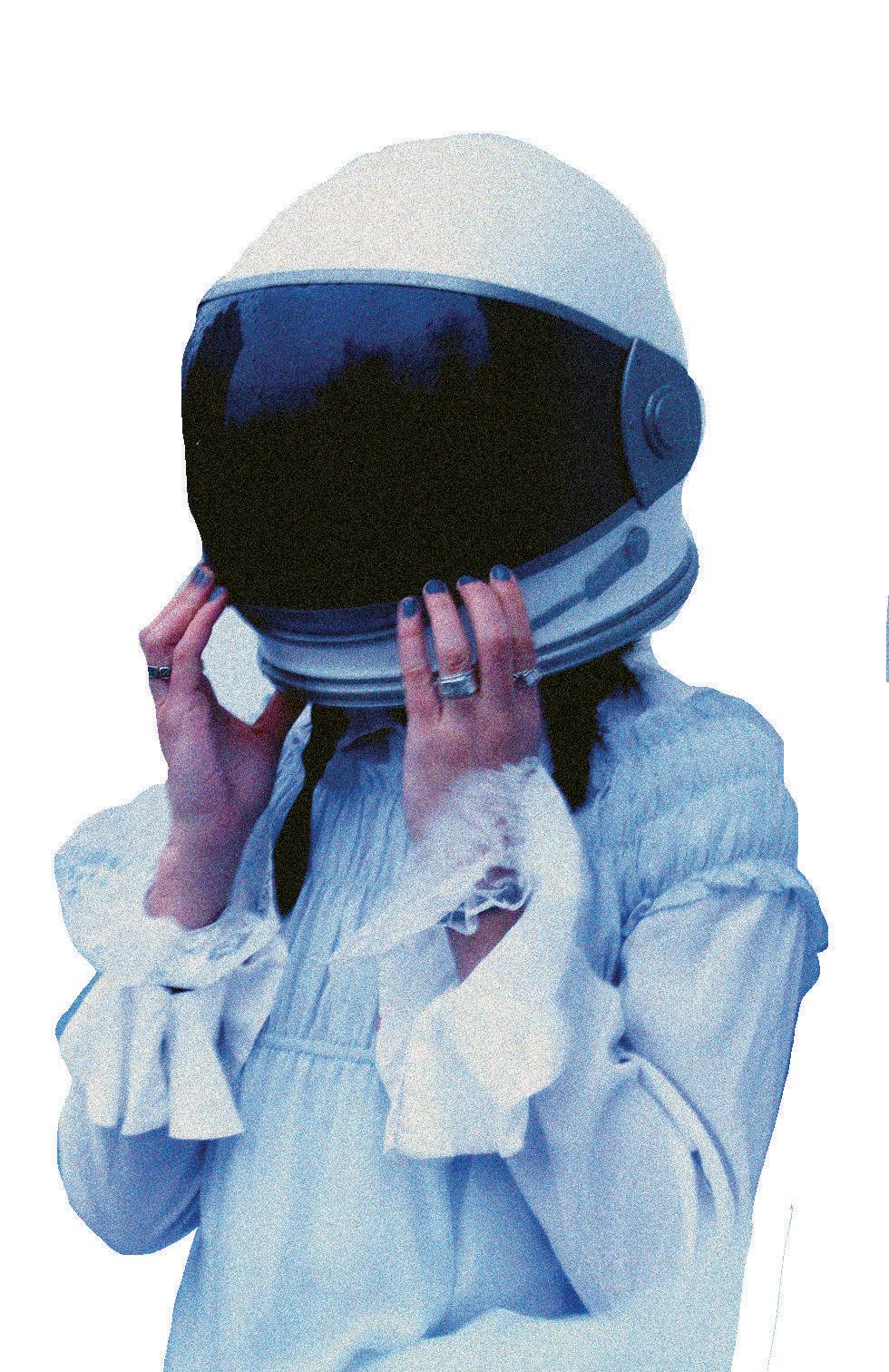












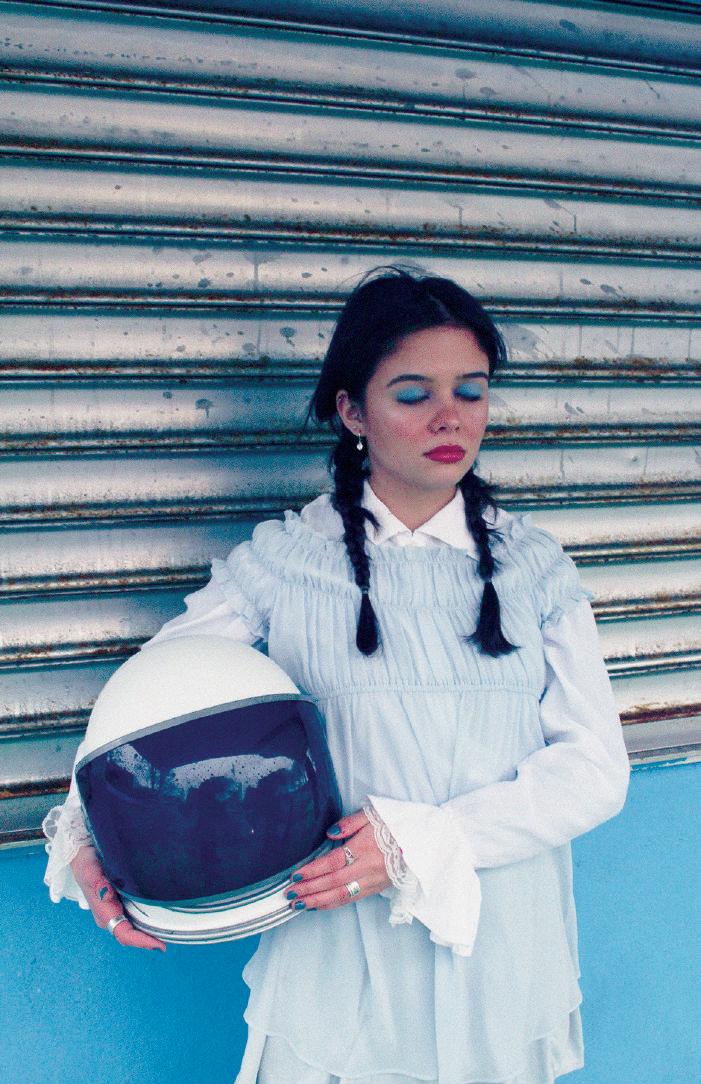


38 | LIVING
Diaries of a Solo Traveler: The Good, The Bad & The Ugly
WRITTEN BY ELLYE SEVIER
When you’re traveling, alone there’s no one to hold you accountable. No one but yourself and the world, a lesson I’ve learned repeatedly. I’m not new to solo travel, but I wouldn’t call myself an expert either. Every time I travel, it feels like the first time all over again, and I’m consumed again by a strange mix of naivety, confidence, and dread.
Living in the same town my entire life, I’ve always yearned to experience other parts of the world. At some point in high school, I realized I didn’t have to wait for anyone else to travel alongside me: a revelation aided by influencers who preach about the glories of solo travel. So instead of rushing into college, I decided to take a gap year and save up to turn my dreams of traveling into reality. Just as I neared graduation the pandemic hit, and—you guessed it—those dreams were dashed.
The first time I finally traveled alone was the summer before I went to college. I found an affordable ticket to southern France, and I jumped at the chance. I had stayed in Biot, France for an internship with a close friend in the past, so I was somewhat familiar with the place and the people. But this time, I was doing it all alone.
I remember boarding the plane alone with a queue of “wtf is my life rn” songs playing in my Airpods. It all felt so glorious. That was until it actually started. First, it was my bag, which the airline lost between Amsterdam and Nice. Then, when I finally made it to the very damp and dark basement I was staying in, I discovered that WiFi and phone service couldn’t reach me, which isolated me from my friends and family back home. Then came the jet lag sickness, and I spent my first day throwing up—only water because I hadn’t mustered up the courage to eat alone at the restaurants in town. The first week I was exhausted, lonely, and miserable; most of what I remember is veiled by tears.
I remember feeling like I’d been lied to. I knew that solo travel wasn’t always going to be as romantic as those influencers’ aesthetic posts made it seem, but I never expected to feel as lonely as I did. And, in my excitement, I had glazed over many of the very real dangers of traveling alone as a woman—something that isn’t discussed online as much as it
should be. While I was lucky to be staying in a small town near people that I somewhat knew, once I arrived, I realized that I didn’t know what I would do if anything were to go wrong.
The idealistic haze of possibility perpetuated by travel influencers often overlooks the potentially dangerous consequences of traveling unprepared, especially as a young woman. While most influencers promoting solo travel come from a place of encouragement (and I’m all for making travel feel more accessible—it can be more affordable than you’d think), influencers should be hesitant to romanticize the experience and instead be open about the potential dangers involved.
Whether because of my own lack of preparation, my environment, or simply by chance, I’ve been in many scary situations while traveling alone. From not being able to sleep from anxiety in a co-ed hostel room, getting stranded in the countryside by poor public transportation, my phone dying during crucial navigation, drinking too much and walking home alone, misplacing my passport, to even accidentally getting stuck in a car with a really drunk driver, I’ve had to learn that the only way to handle these fears and hazards is with reason.
These are the moments that people don’t talk about online. These moments aren’t “Instagram-able,” but they’re very real. In a world where many of us are deluded into thinking that what we see on our phone screens is real life, it’s important to know that there’s more to travel than the glamor. This is why travel influencers, especially young women advocating for solo travel, should be upfront and transparent about the varied complications, challenges, loneliness, and dangers of traveling alone.
Solo travel taught me many lessons, some painful and others beautiful, but all empowering. I think that everyone should try traveling alone, be it foreign, domestic, or local. And everyone deserves to feel empowered to do so; it can be accessible, affordable, and achievable. However, in order to protect new and naive travelers, we should be honest online with how we portray solo travel so that they may have the best and safest experience possible. YM
LIVING | 39
ART BY ALEKS CARNEY
YOUR LIFE IS NOT A MOVIE
No one needs a reality check more than my generation.
All Gen Z does is scroll through social media looking for an escape: stalking celebrities, hyper-fixating on a random girl we found on Pinterest, or even placing ourselves into the lives of others— concrete or fictional. Those of us who think we avoid such a trope are just as spellbound, choosing instead content and entertainment we think others will laugh at or enjoy, throwing a bone to our selected community to keep them busy while we meticulously select our next move.
If you’re still thinking, “I don’t do that, I don’t care what people think of me,” you’re probably lying … but on the slight chance that you really don’t care, and your social media presence simply happens to follow your innate identity, maybe it’s time to think about how you feel about yourself and your own life.
If you’ve been on any social media apps in the past few months, you’ve probably noticed the sweeping “my life is a movie” mindset. Everywhere you look another creator is giving you advice on how and why you should start romanticizing your life. Everyone seems to think that the way to solve your problems is by making a playlist for every occasion or pretending a camera is watching you cook pasta alone.
Don’t get me wrong, I’m guilty of catching myself doing things to make my life more interesting, but once you really think about why you depend on this romanticization, it’s not so fun anymore. Needing this mindset to carry out simple, daily tasks—like cooking—should get under our skin. It should make us wonder why we can’t bear to live our lives as ourselves and what’s keeping us from enjoying life and all its mundane activities.
Being surrounded by people telling us how horrible the world is now, and how we’ll never experience the joy of the “good ole days” gives us every reason to want to turn off reality and join one where we feel welcome. Adults tell us how easy we have it while we worry about how old we’ll be when the world finally ends, hear about the latest of our peers who lived through another shooting, or try to keep up with politics that make it seem like everything will just get worse as we go along. It’s just easier to go on a color-coordinated picnic with a five-dollar cherry Coke and tell ourselves that our lives are just like the movies. Romanticizing our lives helps to put a colorful film over the morbid world we live in, and although this is hiding from our reality, at least in the moment we have control over something.
Control is addicting, and soon enough it becomes impossible to live without using these dissociative techniques. I used to constantly imagine myself in a different body or as a part of a different plot. I told myself that I was “creating my own narrative” when in reality I was creating a fictional character. I loved my fake life so much that I felt the normal life I was living wasn’t enough; I felt like I was living wrong.
Looking back on this cycle I was trapped in, I realize that the lives I
made up for myself were utterly unrealistic. People glamorize the act of romanticizing your life to get through your day, and I can imagine some of you have had similar experiences to me: feeling ashamed and not up to par with the life you curated for yourself. You paint this perfect picture of your life and the world in your mind and try to convince yourself that this is how everything really feels, when in reality, depressing images and emotions replace the ones you’ve written in.
Being the “main character” is fun. Here, the world revolves around you, the biggest problems for everyone are the ones involving yourself, all of humanity working to push you to the climax of your plot. Spotify tells you what to listen to if your life was a movie and reminds you that “every main character needs a soundtrack” (duh). We watch shitty coming-of-age movies that make the lives we live look magical, making us delusional and forgetful of all the work that went into creating these fictional projects. But in reality, no matter how many pages you scribble in your journal so hard it rips (aesthetically) or how many used bookstores you take pictures in waiting for your Netflix original Meet Cute, the world DOESN’T revolve around you. No one cares about your life or your problems because everyone has their own boring lives and problems to deal with, and probably imagines everyone else cares about them.
I used to feel that thinking like this was depressing and pessimistic, but now I think it’s liberating. Not only does it free you from the expectations everyone else holds but from the unprecedentedly high expectations you set for yourself. You live in your own bubble for so long that when it’s finally popped and you see everything else around you clearly, it’s easy to see that it’s never been that deep. It’s time to de-romanticize life and see it for what it really is.
There are some deliberate, and easy, measures you can take to ensure that you stay grounded in reality. I’ve tried taking walks, not allowing myself to create a completely imaginary life while doing so, and journaling an exact summary of my day instead of melodramatic love letters; all of these actions have helped me to remember the joys of real life. Doing things every day that forces you to see the charm in the blandness of reality makes it possible for you to simply enjoy every day. Such a simple statement would’ve seemed impossible before I implemented these daily “reality checks” but now I don’t need to watch from the outside in.
Romanticizing the boring details of life can be fun, but quickly becomes an inescapable cycle used to cope with reality. When the line blurs between reality and “on-screen” narratives it can be hard to want to enjoy what is in front of you. It’s much easier to stay away from anything you don’t like than be uncomfortable in the realities of the ups and downs of life, but forcing yourself to love even the downs makes life less of a waiting game. Instead of waiting for another short-lived high, you can be perfectly content at rock bottom, in your own, REAL body and mind. YM
40 | LIVING
WRITTEN BY ISABELLA CASTELO

LIVING | 41
PHOTOGRAPHED BY DANIEL COLE
Why Do I Hate My Birthday?


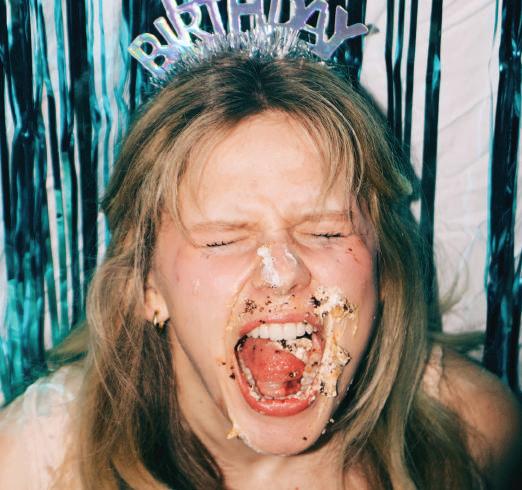
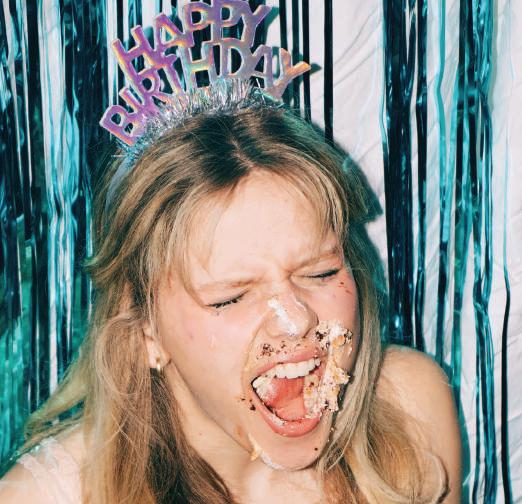
42 | LIVING
WRITTEN BY WREN LIVESAY
Old photos with cake smeared across my tiny mouth smiling ear to ear prove I must have loved my birthday once, I must have.

I’m afraid I’ve started shrugging when people ask if I’m excited for my birthday. Then again, receiving attention is not my strong suit; I’m the kind of person who receives a compliment by physically recoiling and covering my face, a reaction I’ve learned with age. My new aversion to attention makes me feel sorry for my younger self who used to proudly wear her own frosting, how disappointed she would be to know that the big day in midMarch has become one I decidedly ignore until someone forces me not to. Recently I embarked on a mission to understand why and as it turns out, I’m not alone.
Days before my sister’s twenty-third birthday I asked, “Are you excited?” She sighed, “No, not really.” She went on to explain the feelings of distress her birthday has caused, especially in recent years. In her words, “I am not the kind of person birthdays are made for.” It made sense to me, perhaps more than the blind celebrations and the excitement to simply age another year. I wondered if our shared feelings manifested in our youth. The two of us a mere two years apart aged like a syncopated rhythm, her experiences always happening just before mine.
I began to consider the other family, friends and teachers I’d encountered who shuttered at the thought of their own big day, who cringed when “Happy Birthday To You” inevitably rang out. Some friends of mine annually felt increased feelings of depression around their birthdays, exhibiting behaviors similar to a depressive episode. But why? Why does a day meant to produce feelings of contentment and joy leave so many just trying to cope until it’s passed?
For me, it must have started in childhood. My birthday always seemed to belong to others. Even in elementary school my birthday was about having enough cupcakes for everyone in my homeroom. When middle school came around, it seemed like every kid at my school was in a parent-sponsored competition. Strange themes with stranger looking
PHOTOGRAPHED BY LUCIA JOHNSON
cakes haunt my memories. One of my sister’s closest friends had a Hunger Games themed birthday, my own sister’s party was Les Miserables themed; I’m not sure which is more concerning. In high school people would create elaborate social media posts for one another, carry around large number shaped balloons for whatever age they were turning, and gossip about who was and wasn’t invited—it all felt so performative and my view shifted. A birthday became another contest, another chance to prove oneself.
I now realize these birthdays were my introduction to being the center of attention, a feeling I’ve never become acquainted with. Birthdays shove us into a spotlight we never really ask for, to the point of it feeling undeserved. While a small part of me loved the feeling of my classmates singing happy birthday or my family taking me out to dinner, another part kept asking myself “why?” All the ones that seemed to matter quickly came and went.
When I turned 16, I was more worried about who might be upset I didn’t invite them out to dinner than the day itself. Eighteen came when I was in quarantine. As 21 approaches, I find myself more overwhelmed than excited. As an adult I am suddenly forced to confront the growing number which has become so much a part of my identity. It’s the label I never asked for, the one I can’t control. I imagine myself 10 years ago and the memories feel too far out of reach, clouded by high school and college, and I wonder when all this will feel the same. I reached out to some other college-aged friends to see how their birthdays affect them, and I’ve found I’m not as alone as I thought. As it turns out, quite a few of them share my aversion for attention and, as one anonymous interviewee said, “hate the feeling of being celebrated.”
The solution? Let’s give our birthdays back to ourselves. A solomovie night fulfills some in the way a surprise, 30 person bash does others. Whatever it is we need to do to get through a day society puts so much pressure on, whether we love it or deeply resent, is enough. YM
LIVING | 43
YOURPLACES
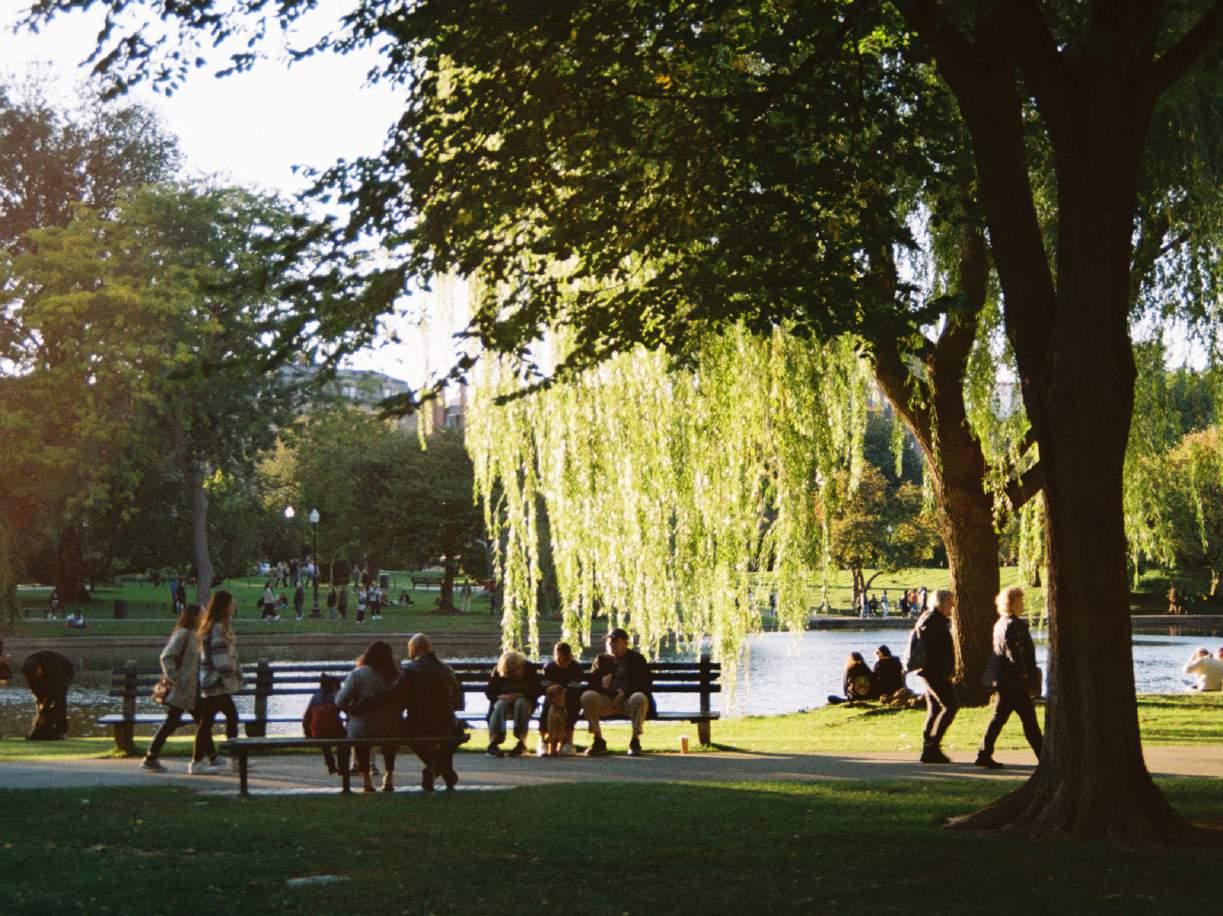


PUBLIC GARDEN
COMMON
ISABELLA STEWART GARDNER MUSEUM BOSTON
44 | LIVING
PHOTOgraphed BY LAUREN SMITH, SEBASTIAN OLIVO, LILY BROWN, IZZY ASTUTO, ASHLYN WANG





 BEACON HILL
BEACON HILL
MUSEUM OF FINE ARTS
JFK LIBRARY
CHARLES RIVER ESPLANADE
BEACON HILL
BEACON HILL
MUSEUM OF FINE ARTS
JFK LIBRARY
CHARLES RIVER ESPLANADE
LIVING | 45
500 BOYLSTON

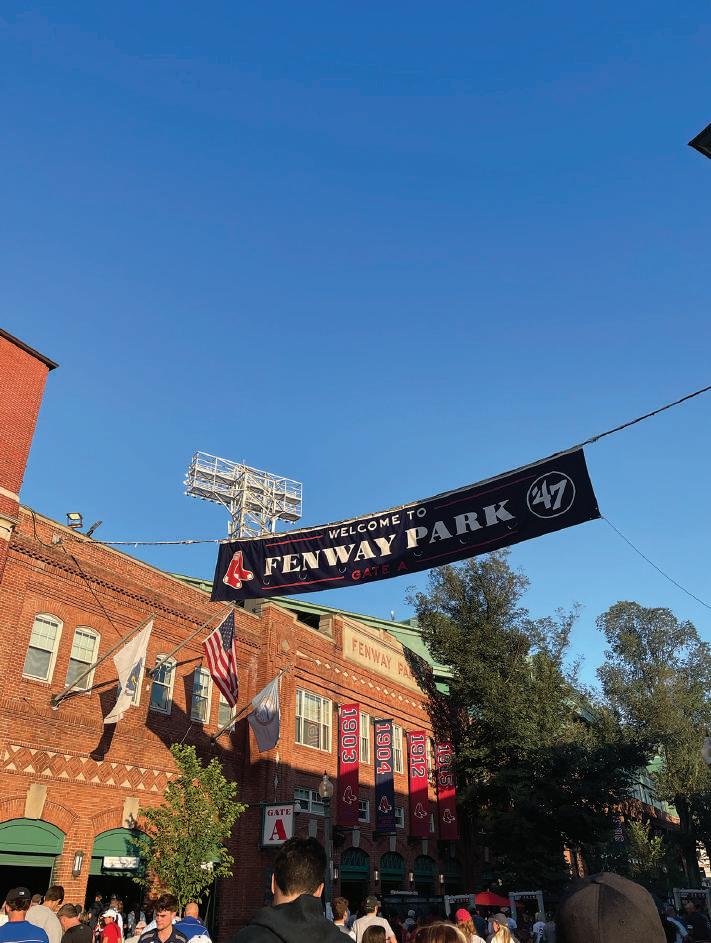



FENWAY
PARK FAN PIER MARINA
CHARLES RIVER
46 | LIVING
BOSTON COMMON
KINGS
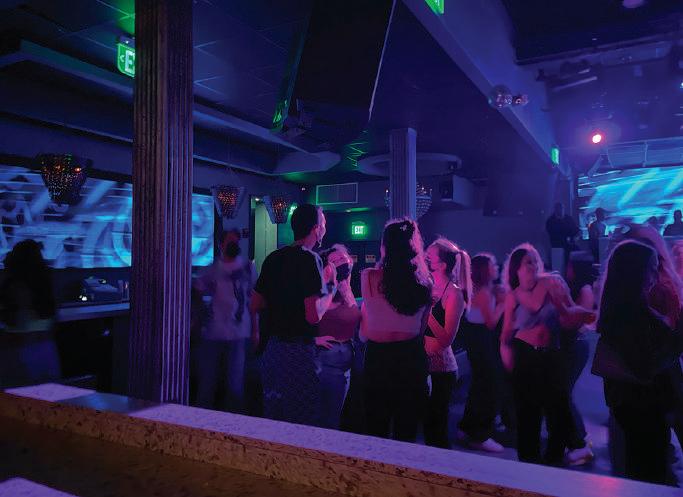
NORTH END





 CHARLES RIVER
BOSTON HARBOR
FANEUIL HALL
CHARLES RIVER
BOSTON HARBOR
FANEUIL HALL
ICON
LIVING | 47

48 | YOURMAG
PRINCESS PEA

YOURMAG | 49
DIRECTED BY NIRVANA RAGLAND, PHOTOGRAPHED BY EYIWUNMI AJAO, STYLED BY NIRVANA RAGLAND, MAKEUP BY KATHERINE CORVI, MODELED BY NIRVANA RAGLAND




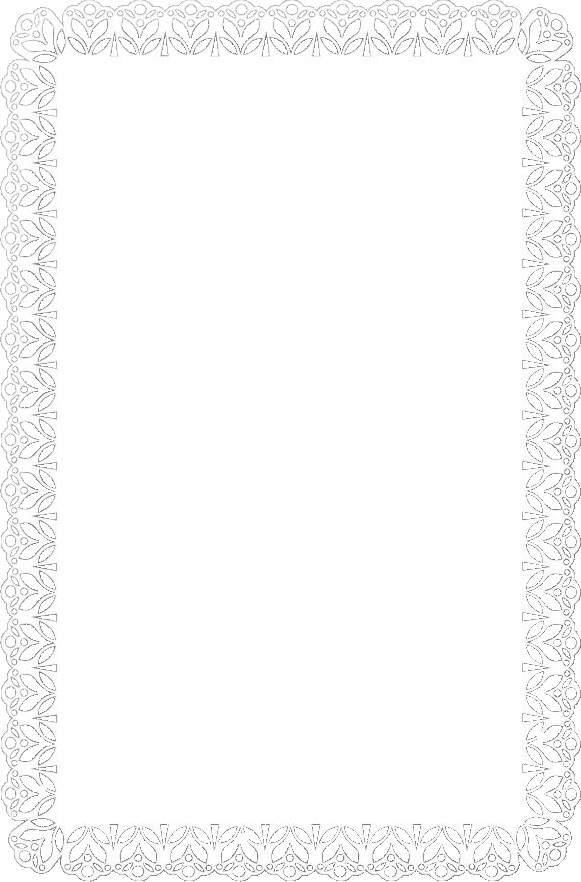






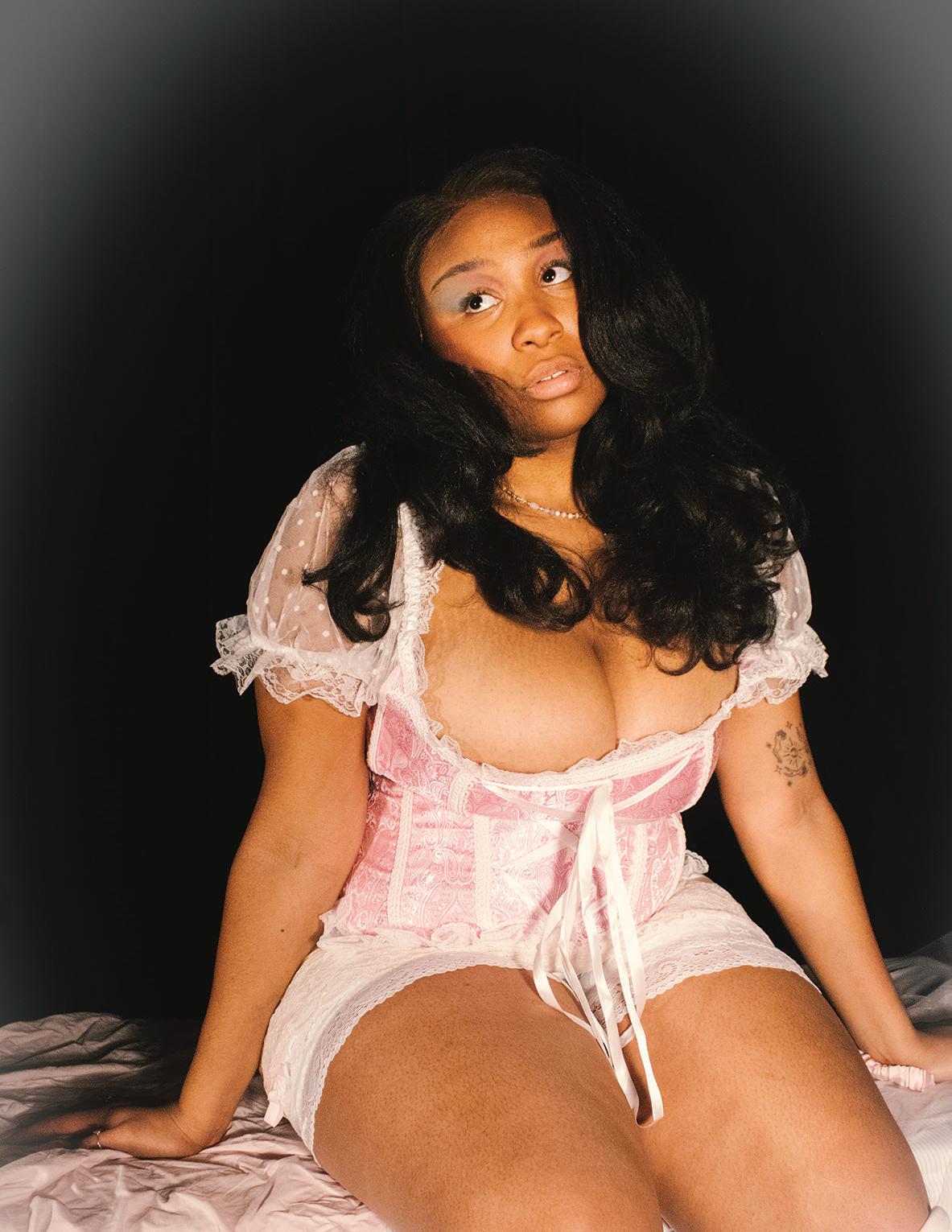

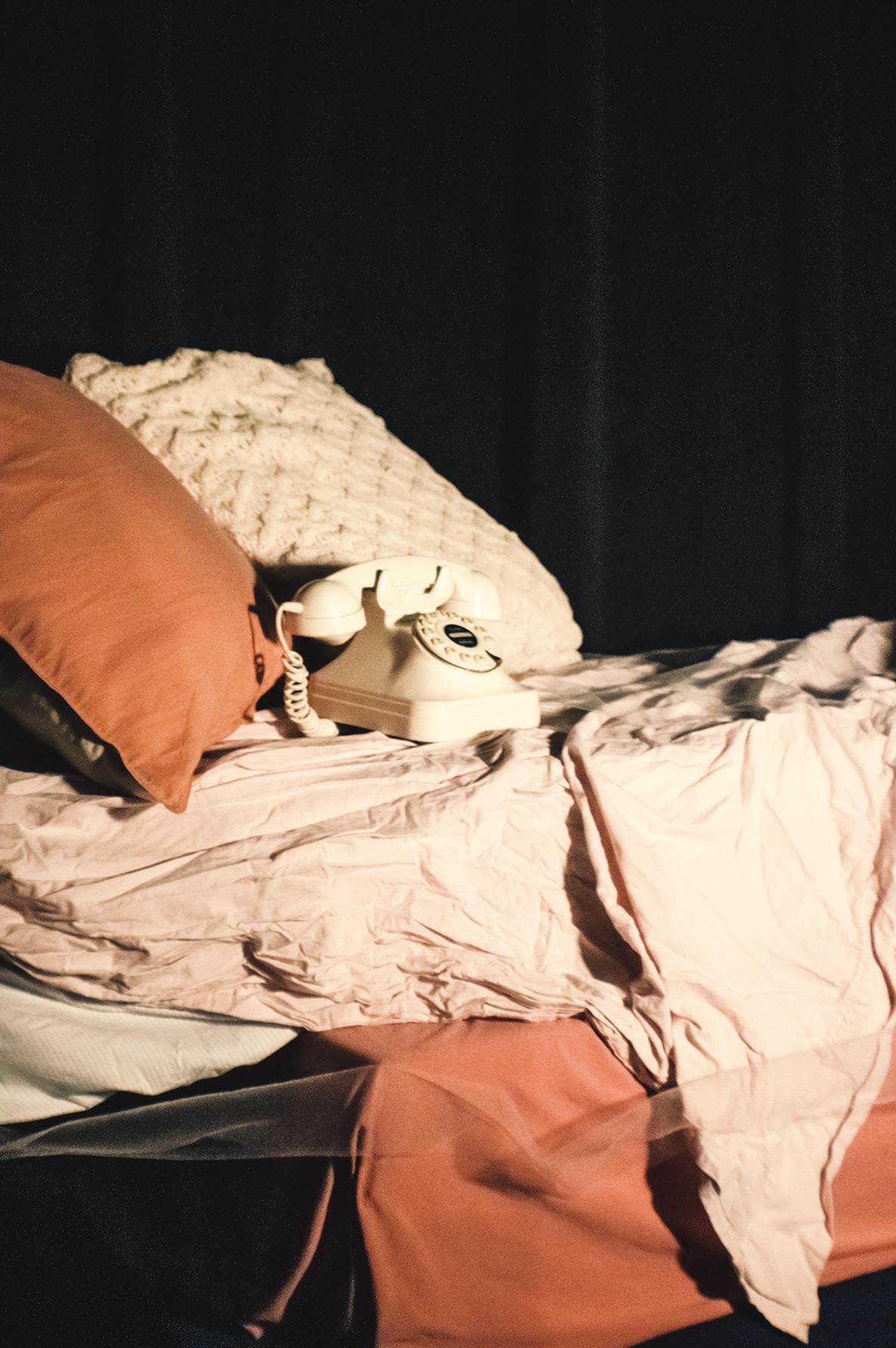


I HAVE A PROBLEM WITH TRUE CRIME (AND YOU SHOULD TOO)
In the 1990s, violent video games started to become popular, which led many to believe that this kind of violent entertainment was going to turn kids into serial killers. But that never happened, or at least there isn’t direct proof at this time. But what has happened is that, alongside violent video games, crime shows like Criminal Minds, Law & Order, NCIS, and true crime podcasts have become increasingly popular since the early 2000s.
Cambridge University defines true crime as media “about real crimes that involve real people.” True crime podcasts are the third most popular genre of podcasts, and Criminal Minds has produced sixteen seasons since the pilot aired in 2005. The most popular video game of 2022 was Call of Duty: Modern Warfare II. In the past two years, dozens of true crime shows and movies have been released, including Murdaugh Murders: A Southern Scandal (2021), Catching Killers (2022), Ted Bundy: American Boogeyman (2021), just to name a few. As Americans’ screens have been infiltrated by gore and death—both fictional and very real—people have become alarmingly desensitized to violence. As the genre grew in popularity and emotional trauma flooded our television screens, we chose to ignore it, as a means to cope.
As a society, we tend to glamorize trauma. There’s a big push to be different, to stand out; even to be “ruined” so we can feel like we deserve to be a victim. This mentality has created a complex known as the “missingwhite-woman-syndrome,” which refers to a fascination with white women going missing and how the media focuses their stories more than any other victims. Think of Gabby Petito, Elizabeth Smart, Natalee Holloway, Samantha Runnion—the list goes on. Not only does the media fixate on missing white women (think about the special episodes of Inside Edition or limited series on Oxygen like The Disappearance of Susan Cox Powell), but they disproportionately ignore missing cases of women of color.
A strange consequence of this is an obsession with being a victim; people all over the internet have started investing in In Case I Go Missing books, which they fill with their own DNA and handwriting samples. What originally started as a protective measure has turned into a sensationalized piece of media and a trend. Posting things like, “adding new hair to my In Case I Go Missing Book! Tag along!” people are profiting off of others’
misfortunes in new ways we have never seen before, and the consumption of this content is only growing. 13 percent of Americans said true crime was their favorite genre of media, in a poll conducted by YouGov in 2022.
The question is: is true crime informative or exploitative? Occasionally, siblings or parents of missing people have asked the public to help solve the mystery. But that’s a very small fraction of those participating in true crime. Most creators involved in this practice find the “juiciest” stories or cases they find the “weirdest” and make multi-part TikToks or entire shows dedicated to uncovering the case. They create podcasts, discuss theories surrounding disappearances or violent crimes, and make money off of it. And all without consent of the families of the victims. These people aren’t raising awareness to someone who has never been found, they are using their stories to profit themselves. It’s selfish, it’s exploitative, and it’s mean.
People have become obsessed with these killers due to the abundance of content made about them. After Dahmer — Monster: The Jeffrey Dahmer Story came out in 2022, people were fetishizing being one of Dahmer’s victims, falling in love with a sadist and making excuses for his actions. You can find any of this content with a quick search on TikTok. People are fans of him.
Viewers have also become so enthralled by these mysteries that they form their own theories and unwarranted opinions about real people. In the case of the Idaho murders, which took place this past November, people made assumptions about a survivor, claiming she must have been involved since she wasn’t able to save her four friends. This poor girl, who was dealing with the death of her closest friends, was being accused by people who do nothing but sit behind a screen all day with the protection of a username. Press releases and updates regarding cases should be delivered by news outlets, not some random @ on your Instagram explore page. @themrmanhattan on Twitter has posted a series of edits asking people questions like, “Should Kohberger get the death penalty?” while pictures of the victims dance across the screen to a popular audio. Other people, who have no relation to the victims, have written obituaries and eulogies as if they were close to them. @cofield_andrea tweeted, “I know I’m not the only one just sitting here waiting for the Idaho murders to heat
ART BY ISABELLA CHIU
56 | ARTS AND ENTERTAINMENT
WRITTEN BY LAUREN SMITH
up!!!!” All yearning for new developments to make the case more interesting, yearning to make someone else’s horrific death interesting

All social media platforms are currently filled with horrendous content about cases like the Idaho murders with users who feel too comfortable speaking their unwarranted thoughts about them. This isn’t a limited HBO series finale or a book release. These are real people with thoughts, feelings, families, friends, habits, goals, and wishes, and we need to remind ourselves of their humaneness. We need to remind ourselves of the difference between fiction and real life, and understand this is not something to glorify or sensationalize; it’s something we need to respect and be saddened by, not entertained.
There’s a fine line between investigative journalism and creating a spectacle of someone’s death or disappearance. And that line is often public involvement. The way social media is used to create cult-like engagement surrounding particularly gruesome cases fosters a feeling of personal investment among consumers, as if they are now real detectives that believe they have some involvement in the solving of the crime. This is not a board game, this is not a fictional TV show, this is not a puzzle you have to solve. These are real people’s lives you are theorizing about, with just a twitter username separating you from reality. This is real life, and often the worst part of it for the victims and their families. YM
ARTS AND ENTERTAINMENT | 57

58 | ARTS AND ENTERTAINMENT
ART BY CHRISTINA CASPER WRITTEN BY CATHERINE KUBICK
SUCCESSION: EMBRACING THE FICTIONAL
ANTI-HERO
The television landscape has long been painted with a vast array of morally compelling characters and stories. Over the past few decades, there has been a noticeable shift in focus within TV works, with a more prominent focus on exploring the narrative of the “bad guy,” averting from a long-held belief that audiences can only love a hero. Television shows like Breaking Bad, Better Call Saul, Dexter, and The Sopranos have all solidified themselves as critically acclaimed series, and have proven that there is indeed a prominent audience with an incredibly strong fascination with morally and ethically flawed characters.
As HBO’s Emmy-winning dramedy Succession airs its fourth and final season this spring, it’s clear that this show’s massively successful run is largely due to the audience’s profound fascination with the crooked and morally ambiguous portrayal of the fictional Roy family.
Succession centers on the exploits of the Roys, the familial owners of the fictional multi-billion dollar media conglomerate: Waystar Royco. The show opened in 2018 centering on the family CEO and patriarch Logan Roy as he begins experiencing a clear decline in health. In the wake of his illness, recognizing that their father is potentially unfit for the role of CEO, the four Roy children all begin to vie for control and prominence within the family company. The storyline of this series takes a noticeable deviation from other aforementioned “bad guy” centric shows. There is a lesser focus on crime, and other further removed acts of corruption, instead focusing on some issues that hit closer to home, including the nefarious and unethical aspects of the rich and powerful that reflect our own modern corporate America.
The very idea of centering an entire series around an entirely white, out-of-touch, filthy rich, and ethically rotten family, such as the Roys, seems like it would spell out a show’s death sentence due to a perceived lack of viewer empathy. Whether the show’s success can simply be attributed to the audience’s morbid curiosity found in the foul-mouthed and cruel banter between the Roy siblings, or the more complex familial relationships at play between a father and his children, it is clear that audiences resonate with this series profoundly.
Watching this series is certainly a strange experience, as audiences look on while these characters make some horrifying decisions with
oftentimes no repercussions due to the Roys’ wealth and status. However, there is a strange empathy that we feel as we watch these characters. Though we may not necessarily sympathize with them completely, we at least begin to understand the extent of the culture and environment that has fostered their behavior.
Audiences begin to understand and connect with the family’s only daughter, Siobhan Roy, as her cut-throat and seemingly cruel nature towards her husband is explained. We see her tumultuous relationship with her virtually absent mother, as well as the array of failed relationships that exist within her family, as they have provided no true example of a healthy partnership for her to emulate. Viewers also begin to pity the youngest son, Roman Roy, as we begin to understand that the character’s selfishly aloof and foul-mouthed exterior serves as a defense mechanism for his crippling fear of exhibiting emotional vulnerability.
However, the show’s audience develops perhaps the most profoundly complex relationship with Kendall Roy, the middle child. Kendall is the most intense depiction of an “anti-hero” in Succession’s entire character log. We watch as Kendall struggles, emerging from his picture-perfect corporate “daddy’s boy” persona, into a morally fluctuating individual who learns to wear his heart on his sleeve, as he slowly begins to acknowledge that his father Logan, may just be the true monster in his life after all. We look on in pity as Kendall attempts to navigate his identity and reckons with the immense personal and familial damage caused by the company he once loved.
Succession has masterfully crafted characters that audiences just love to hate. Each of them is vastly enthralling in their own way, showing a different facet of human nature that audiences aren’t accustomed to seeing so close. The show’s profound social commentary, accompanied by some masterful writing, hilarious and witty banter, and a compelling storyline allows these seemingly irredeemable characters to soar to new heights.
HBO’s Succession is a cautionary tale of sorts, demonstrating how wealth, power, and status can corrupt humanity to its core, solidifying these protagonists as a fictional dumpster fire that we just can’t look away from, and can’t help but care about. YM
ARTS AND ENTERTAINMENT | 59
THE LOST ART OF A
QUIET THEATER
It’s Christmastime in Boston. The sun is shining over a fresh blanket of snow in the Common, colorful string lights illuminate the city, and the Boston Ballet is performing “The Nutcracker” morning, noon, and night. The historic theater is packed with people dressed in formal attire, many accompanied by little girls in ballet costumes (ever-hopeful that they might be beckoned onto the stage to perform with the ballerinas), and beautiful artifacts from the ballet are on display—tiaras with real diamonds, sparkling white tutus on mannequins, and the original pointe shoes of ballerinas past.
Everyone anxiously takes their seats as the lights dim. The orchestra comes to life to play the overture. A spotlight warms the stage, but all you see are the blaring white lights dotting the room from various audience members’ phone screens breaking through the darkness. The plucking of violin strings from the pit is overshadowed by candy wrappers crinkling, the shuffling of too-young children uncomfortable in their seats, and the whispered, yet still too loud chatter of two moms in the row behind you, talking about their own daughters’ dance classes and upcoming recital.
Once upon a time, live theater was the primary form of entertainment—before radios, record players, music streaming and television, there were musicals, plays, ballets, and operas. While perhaps only accessible for a wealthier crowd, these events were the norm, and, because of that, the etiquette of being an audience member was an inherent part of the culture—something acquired over time while attending such events. Perhaps because entertainment options were so limited, these live events were even more special.
Nowadays, we are overwhelmed with countless avenues begging for our attention. Sure, there’s still live theater, but we also have the option of watching and engaging with nearly any conceivable piece of media with a device kept in our back pockets. We have to be selective with our attention now, as it is one of the few things in life we can control.
As someone who grew up performing in the classical ballet world, I learned firsthand the do’s and don’ts of attending live theater from the other side of the curtain. Here are the basics of making the live theater experience enjoyable for yourself, your fellow audience members, and the performers:

Don’t look at your phone at all. Just don’t do it. Put it on Do Not
Disturb, or, if you absolutely have to do something, step out into the hallway.
Any comments should be whispered, and very brief. Save the major life updates or your review of the show for dinner afterwards.
Enjoy your snacks, but don’t make any unnecessary noise with packaging.
Don’t bring kids under seven-years-old unless it is specifically a show for kids. Kids learn by example: if you’re chatty and distracted during the show, then they likely will be too.
All this being said, don’t be afraid to make a ton of noise when applauding a great performance. The people on stage get their high from the energy of the crowd, so at the end of a section or at the end of a show, get rowdy if you enjoyed it.
It’s really that simple; however, a lot of this does not apply to the more popular forms of live entertainment today, such as concerts or sporting events—those events are far more casual and social, and the goal is often to be rowdy the whole time. This does not translate to theater, where the goal is to take in the art and respond with a more quiet, respectful, and very present energy.
Perhaps this sounds like the irritatingly strict rules of an elementary school assembly; however, it is purely logistical. You can still hear and follow along with a concert or sports game with people talking and singing around you, and the audience plays a much larger role in the experience of those events. When watching any kind of live theater, the story line, the subtleties in the music, and the transportation into the world of the show are integral to its success. How are you supposed to feel like you’re in the Land of the Sweets with Clara when the person next to you is playing Candy Crush with their brightness turned all the way up?
Theater may not have the same mainstream popularity it once did, but the industry is still very much alive and well. In many ways, the theater world—particularly in the ballet sphere—needs to make changes in order to stay relevant in the modern era; however, there are ways in which the audiences need to make adjustments to the disposition of an earlier day and age to make the experience enjoyable (and worth the time and money invested) for everyone involved. YM
PHOTO BY CELLA LABARGE
60 | ARTS AND ENTERTAINMENT
WRITTEN BY JULIA SLAUGHTER
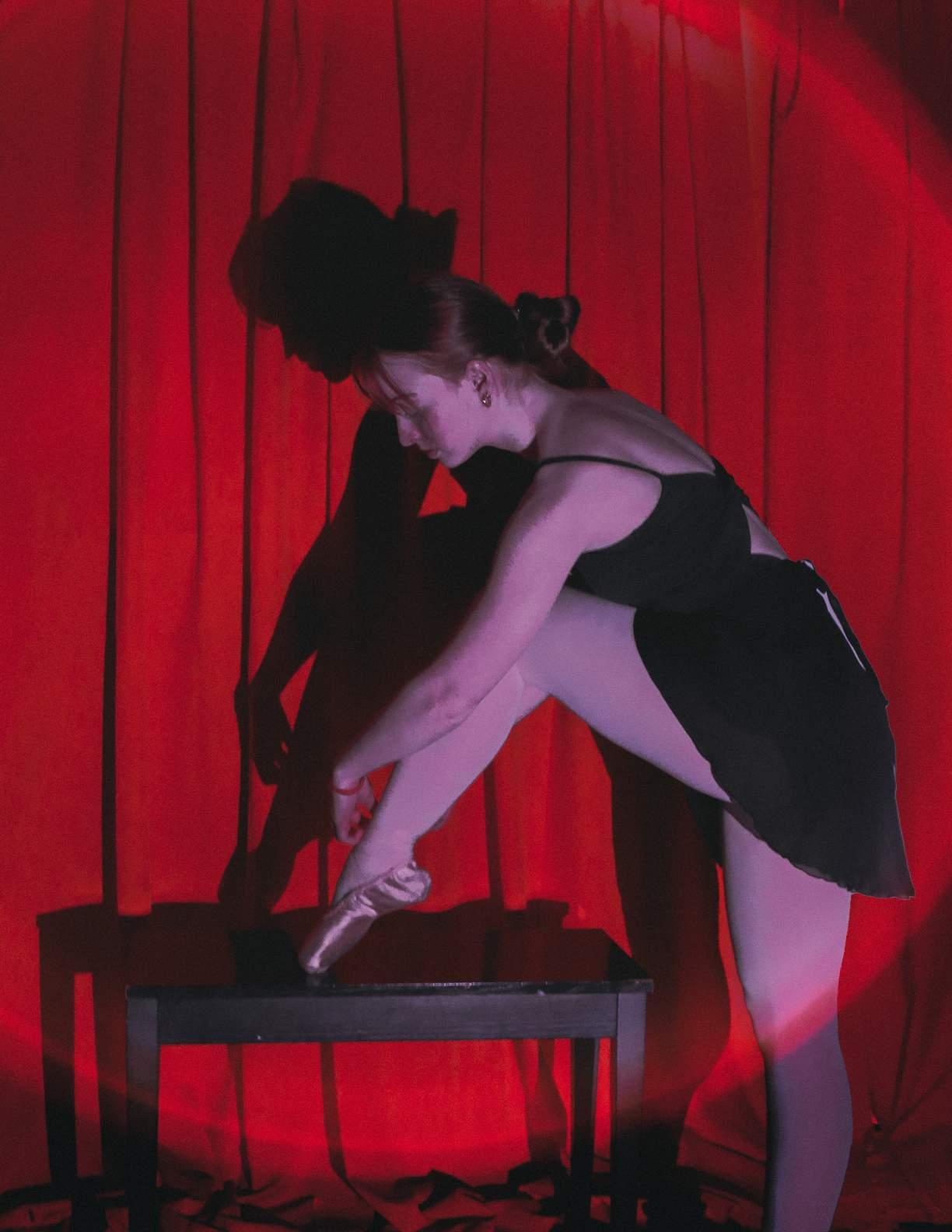
ARTS AND ENTERTAINMENT | 61
Chronic Case of
iPhone Face
 WRITTEN BY KATE RISPOLI
BY BROOKE HOLDER
WRITTEN BY KATE RISPOLI
BY BROOKE HOLDER
62 | ARTS
PHOTOGRAPHED
AND ENTERTAINMENT
Does Camila Morrone’s appearance, like her full lips and thick brows, really take away from the viewer’s experience, preventing them from suspending their disbelief that she is a woman living in the 1970s? Of course, this question does not just apply to Morrone, but any actor whose performance has faced the trending critique of “iPhone Face.” Guy Dolbey, a freelance writer who’s been featured frequently on Film Cred and Discussing Film, chalks a lot of this criticism up to confirmation bias.
“You can’t believe Sam Claflin is from the ‘70s because you’ve seen The Hunger Games,” they tweeted before further stating, “I think to some extent the concern is overstated, and people are more reacting to the knowledge of who an actor is than anything objective about their appearance.”
Of course, one may have difficulty seeing an actor as anything other than modern, especially in the social media age where we have almost unrestricted access to celebrities. There may not be a clear-cut solution to prevent viewers from feeling distracted (particularly in such a way that they are unable to enjoy their viewing experience), though Dolbey suggests that “the main thing is casting actors for demeanor more so than might be common, and deprioritising star power and modern trends in what’s considered attractive” could minimize the amount of “iPhone Face” discourse.
Twitter user Carmen, known online as @riellesfeyre, echoes that sentiment. “I think it’s more about the manners, dialogues, gesticulating,” she says. “If you’re about to play a character from, for example, the ‘80s, you have to act as if you were living in that era.”
To critique an actor who is unable to capture the essence of another time period is reasonable, given the actor’s job is to appear as though they are another person. To critique an actor entirely on the basis of their appearance, however, feels questionable—personal rather than professional. Although an argument stands for critique of costume creators and makeup artists, whose jobs are to help actors blend into their on-screen settings, the diagnosis of “iPhone Face” is one that seems far
more surface level, particularly meant to undermine the acting abilities of women in Hollywood.
“I do think [“iPhone Face”] is something the internet has made up about women,” Carmen says, “I suppose I’m just very opposed to this term because I think it perpetuates misogyny in the industry.”
It seems every month there’s a new hyper-specific term that makes its way around platforms like Twitter, where users are eager to post their takes in greater quantities than qualities. Maybe a modern actor’s face can take away from one’s viewing experience, but there are certainly better ways to express that feeling than the easy out of diagnosing “iPhone face.” Ultimately, it’s likely a critique that won’t last very long, falling under the category of Internet buzzwords instead of an advancement in media criticism.
To take a literal look at the term, we can scoff at its absurdity: of course these actors look as though they’ve seen an iPhone! The iPhone is just as old as some of the actors being criticized for their “iPhone Faces,” like Callie Haverda of That ‘90s Show. While she plays a 1990s teenager on screen, she was born in 2007, the year of the iPhone.

In general, modern actors are likely to have modern features, like straight, button noses and defined jawlines, or follow modern trends, like veneers or dermal fillers, due to current beauty standards and norms. For one to have a face from a different time period is simply less common, therefore making it difficult to perfectly encapsulate the past in our modern day.
Who knows? Maybe a hundred years from now, when physical features have once more evolved, criticism will fall on future generations of actors in period pieces of the early 2000s, criticized for looking as though they had never seen an iPhone. YM
ARTS AND ENTERTAINMENT | 63
“iPhone Face” [ahy-fohn feys], proper noun: the face of an actor who is unconvincing in a period piece, due to the fact that they appear too modern (i.e., “look like they’ve seen an iPhone”).
CHOOSE YOUR PATH
Our recommendations for when you just aren’t sure
Answer each question and tally up your results, then find out our recommendations for what you should read/listen to/watch next on the next page!
1. My taste in music is…
a. Relaxing, acoustic, melancholy
b. Bright, upbeat, hype
c. Emotional, dramatic, transcendent
2. Your dream summer destination looks like…
a. An old city in Europe, maybe Paris
b. Somewhere hot and near a beach, naturally
c. Anywhere quiet that has lots of trees or open sky
3. How would you rather spend a Sunday?
a. Drinking tea and reading your favorite book
b. Grabbing brunch with friends
c. Sleeping in and watching your favorite TV shows
5. What’s your go-to color palette?
a. Soft pastels
b. Bright, loud neons
c. Deep, rich tones
7. You’ll never be caught without…
a. A good book
b. An iced drink of some kind
c. Headphones (noise canceling ofc)
4. What’s your favorite kind of weather?
a. Chilly and cloudy
b. Warm and sunny
c. Dark and stormy
6. What’s your go-to drink order?
a. Something classic, like a cappuccino
b. Something iced and summery, like a fruity iced tea, or honey iced latte
c. Something cozy, like a London fog or chai latte
64 | YOURMAG
A. Chill/Cool/ Rainy Day/Spring Vibes
Songs
“Wasteland, Baby!” –– Hozier
“Across the Universe” –– Fiona Apple
“Partridge” –– Clairo
“Harmony Hall” –– Vampire Weekend
“Man from the Magazine” –– HAIM
TV Shows
The Last of Us
Only Murders in the Building
Buffy the Vampire Slayer
B. Feel-good/ Sunny/Summer/ Adventure Vibes
Songs
“Feels Like” –– Gracie Abrams
“Baseball” –– Hippo Campus
“Binz” –– Solange
“Is It True” –– Tame Impala
“Trouble” –– Cage The Elephant
TV Shows
Heartstopper
The Good Place
The Summer I Turned Pretty Bridgerton
Movies
Knives Out
Good Will Hunting
How to Lose a Guy in 10 Days
Books
The Night Circus by Erin Morgenstern
If We Were Villains by M.L. Rio
Pride & Prejudice by Jane Austen
Book Lovers by Emily Henry
Fangirl by Rainbow Rowell
Movies
Little Miss Sunshine
The Parent Trap
La La Land
Midsommar
Mamma Mia 1 and 2
Books
The Roughest Draft by Emily Wibberly and Austin
Siegemund-Broka
Little Women by Louisa May Alcott
I’ll Give You the Sun by Jandy Nelson
Daisy Jones and the Six by Taylor Jenkins Reid
C. Emotional/ Crying in the Car/Burnout/ Second Semester
Songs
“There’s Nothing Left for You” –– Mitski
“I’ll Be Seeing You” –– Billie Holiday
“Rockland” –– Gracie Abrams
“Amsterdam” –– Gregory Alan Isakov
“The Gold” –– Phoebe Bridgers
TV Shows
Grey’s Anatomy
Money Heist
Vampire Diaries
Modern Love
Movies
Good Will Hunting
Once
Atonement
Moonlight Books
My Grandmother Asked Me to Tell You She’s Sorry by Fredrik Backman
Long Bright River: A Novel by Liz Moore
The Year of Magical Thinking by Joan Didion
Everything I Never Told You by Celeste Ng
YOURMAG | 65
STRIKEOUT

DIRECTED BY BIANCA LUND AND SOFIA VERANI, PHOTOGRAPHED BY SOFIA VERANI, STYLED BY BIANCA LUND, MAKEUP BY ISA LUZARRAGA, MODELED BY CLARA FAULKNER, ZOË ROSS, AMINATA MARSHALL, KELLY CHEN




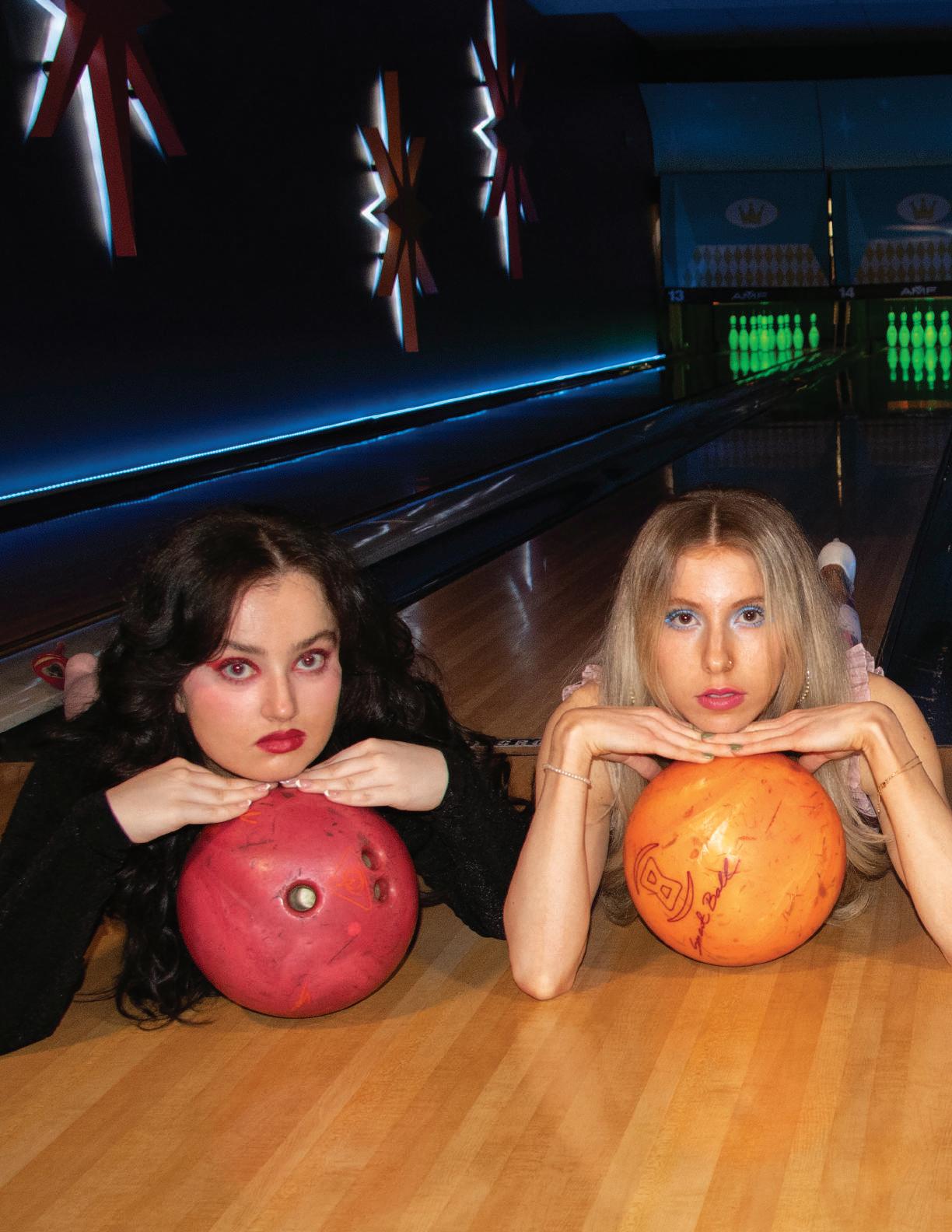

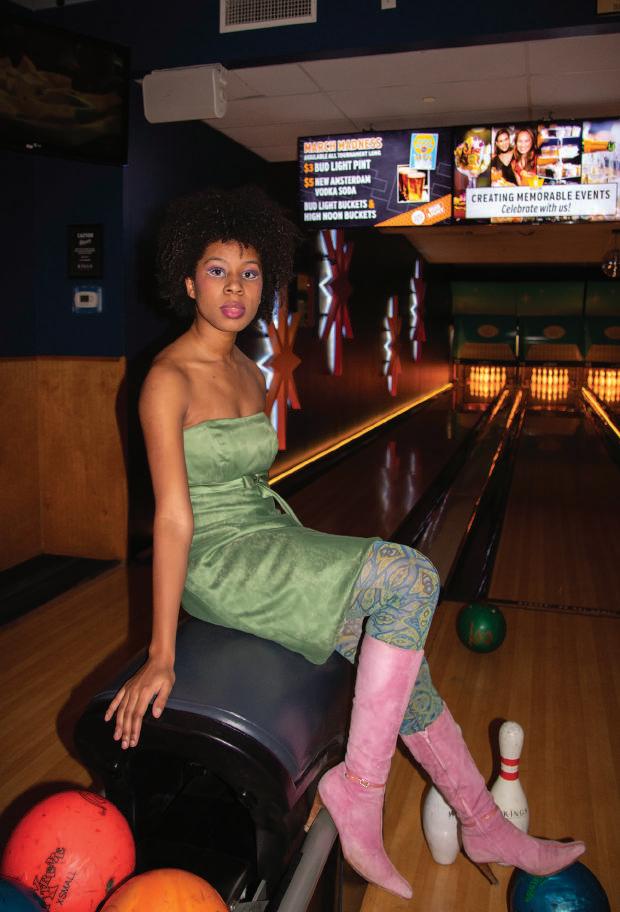

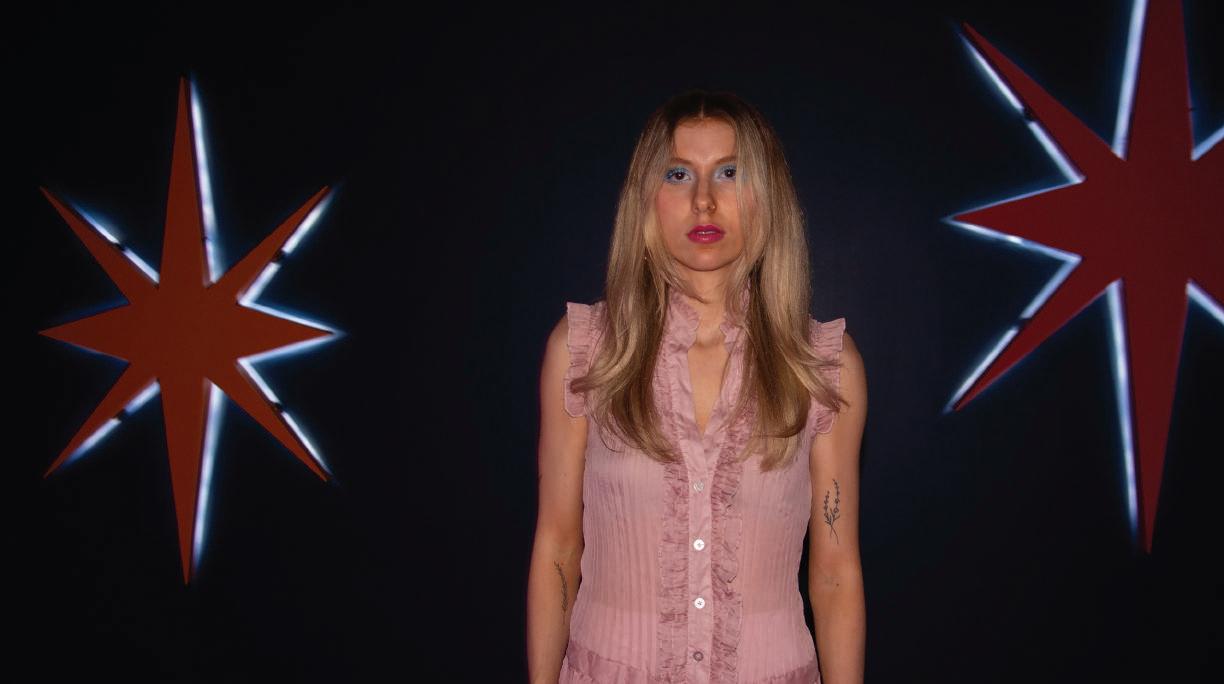
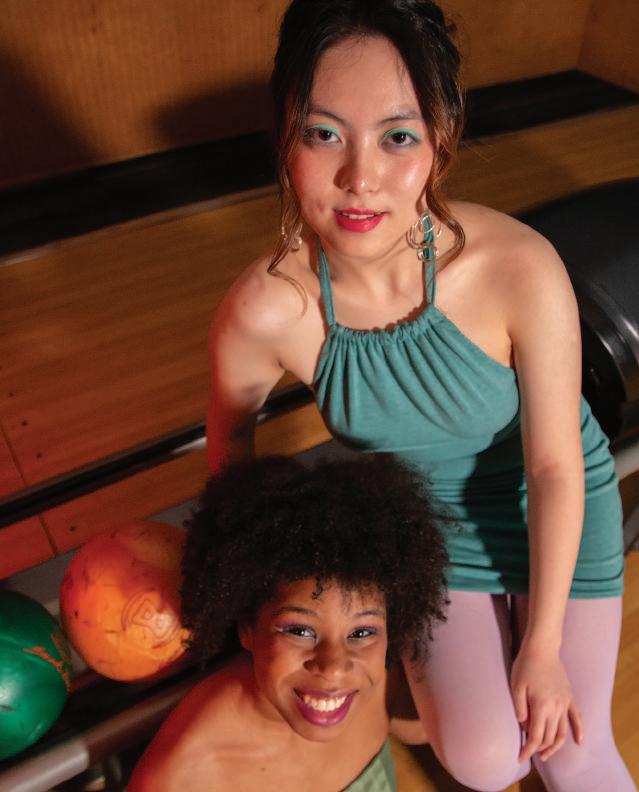


senior photoshoot & yourthings
Claddagh Ring

I’ve worn my Claddagh ring every day since it was gifted to me by my aunt and uncle for my sixteenth birthday. The Claddagh is an Irish symbol—a crowned heart held by two hands—that represents friendship, love, and loyalty. All of the women in my family wear a Claddagh, and I love having it as a connection to some of the most wonderful and inspiring people in my life.
get lit! tote bag

While I love every tote bag in my collection, this one has to be my favorite. I got it at Trident on my nineteenth birthday, and it warms my WLP heart.
iced vanilla latte (in my hedgehog tumbler)
It may be basic, but I can’t go a day without one! I love to treat myself to Starbucks or Tatte, but I’ve been trying to make my lattes at home more often. Because of this, I own an ungodly amount of coffee tumblers— the one I use most often is my Vera Bradley tumbler with hedgehogs all over it. They’re all wearing little crowns!

sunflower converse

I love a good pair of Converse, but whenever I wear these, I really feel like myself. My best friend always tells me that I remind her of sunflowers, so when I saw the sunflower Converse, I knew I had to get them. They’re very cute and comfy, but most importantly, they remind me how special our friendship is.
glossier balm dot com

No matter where I go, this lip balm always comes with me. It gives my lips a full, glossy look, and as a chapstick addict, I appreciate how moisturizing it is. The fig flavor is my favorite!

74 | YOURMAG


k athleennolan (she/her) PHOTOGRAPHED BY ISA LUZARRAGA YOURMAG | 75
camrynciancia (she/her)
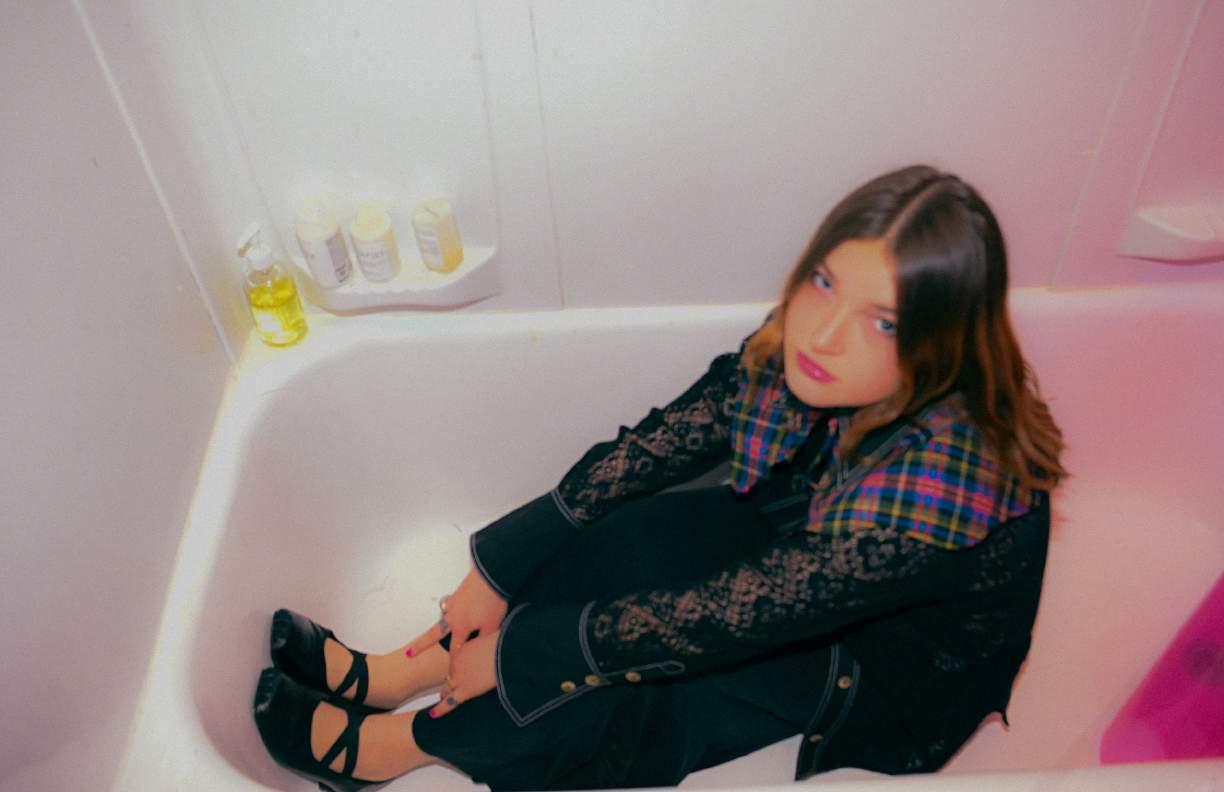

76 | YOURMAG
PHOTOGRAPHED BY LAUREN SMITH
cowboy coffee mug

I bought this mug in Dallas before I moved to Boston. My best friend was shopping for a new pair of cowboy boots and I settled for a coffee mug. Nevertheless, everytime I use it, I think of him, and Dallas, and how lucky I am to be in Boston.
susan alexandra necklace

My grandma bought me this necklace right off of my Christmas list last year and it makes me so happy to put on. I wear it everyday and I actually remember to take it off before I shower or sleep in order to preserve the pearls and “C” embellishment. I have never been a girl to wear my name around my neck but I love being branded with the C.
THE REAL HOUSEWIVES
It doesn’t matter what franchise, I will be tuning into the Real Housewives. I began watching to indulge in some mindless television, but as it turns out, I am devoted, invested, and some would even say addicted. And for the record, I would be an excellent housewife and queen of Bravo if Andy Cohen ever gave me the opportunity.

my real glasses
It is rare that you will ever catch me in my “real glasses,” but when you do, it is probably because I am tired or sick. I have had glasses since the ripe age of one, and although I wear contacts, I return to my glasses every night, signifying the end of one day and the beginning of the next.

little notebook
Someone once suggested carrying around a little notebook everywhere so I complied, and have fallen in love. My little red guy travels with me everywhere I go– to class, to shop, to walk, to travel. Whenever I want to remember something, have a great idea (which obviously happens all the time), or want to chaotically write down a to-do list, Little Red is there for me to leave my mark on.

YOURMAG | 77
‘333’ necklace

The angel numbers “333” mean a lot to me because not only do they symbolize the holy trinity—the father, the son, and the holy spirit— but they also represent the common triad thought to enhance happiness and wellbeing in humans—mind, body, and spirit. On the flipside, 333 also represents luck, ambition, and a life filled with prosperity. I believe that everything good comes in threes and my necklace helps solidify these ideas for me.
‘sunflower’ fragrance by elizabeth arden

The fragrance “Sunflower” by Elizabeth Arden has been my signature perfume since I was a young girl. My nana has bought me this scent for a present every birthday and Christmas. Every time I spray my perfume, I’m reminded of her. She chose this perfume for me to wear because the scent encompasses who I am. The perfume is always in my purse, and I’m always ready for another spritz.
“Mahogany Teakwood Intense” Bath and body works Candle
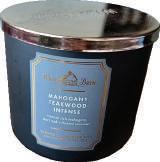
The candle ‘Mahogany Teakwood Intense’ from Bath & Body Works is my favorite scent ever. I love the smell of chopped wood and cologne. When I wake up in the morning, I light the candle to start my day. I meditate and relax, inhaling the candle’s earthy fragrance. The candle helps me remember that everyday has the opportunity to be a good day no matter how I’m feeling. The intense scent calms my anxieties and makes my home mine.
Beats Studio 3 Wireless Headphones by Dr. Dre

The black Beats Studio 3 Wireless Headphones by Dr. Dre that I wear to the gym are a must-have for me. Not only do I wear them to the gym, but everywhere that I go. I prefer these headphones because of their loudness and sound-blocking technology. When I have them on, I’m able to live in my own world with peace. They help me forget about everything for a while and focus on the music.
a bigailross (she/her)

irish knit sweater
The Irish knit sweater, gifted to me by my father, is usually saved to wear for special occasions. But sometimes when I’m having a bad day, I’ll bring the sweater out of hiding. The sweater is made of wool, cream-colored, and perfect for cold weather. When I put it on, I am reminded of my father and how much he loves and cares for me. When he is far away and not around, wearing my sweater is like getting a hug from him, every time.

78 | YOURMAG



PHOTOGRAPHED BY LILY BROWN YOURMAG | 79
GINGHAM GROOVES:

Steady Now — Maggie Rogers
Woodland — The Paper Kites
Malibu 1992 — COIN
Close Your Eyes — The Backseat Lovers
Landslide — Fleetwood Mac
Labyrinth — Taylor Swift
Inertia — Foreign Homes
These Days — Wallows
Space Song — Beach House
Parking Lots — Plums
Wasted Time — Vance Joy
From Eden — Hozier
Lovers

Rock — TV Girl
Runner’s High — MUNA
Good Looking — Suki Waterhouse
Satellite — Harry Styles
Goodmorning — Bleachers
Alaska — Maggie Rogers
Aurora — Daisy Jones & The Six
Lover — The Walters
Cherry Flavoured — The Neighbourhood

Love on the Line (Call Now) — Her’s
Sunshine — The Brummies
To the Mountains — Lizzy McAlpine
Daisy — Pond
Blue Coupe — Twin Peaks
invisible string —Taylor Swift
YM
80 | YOURMAG
P3:
SONGS FOR A PICNIC



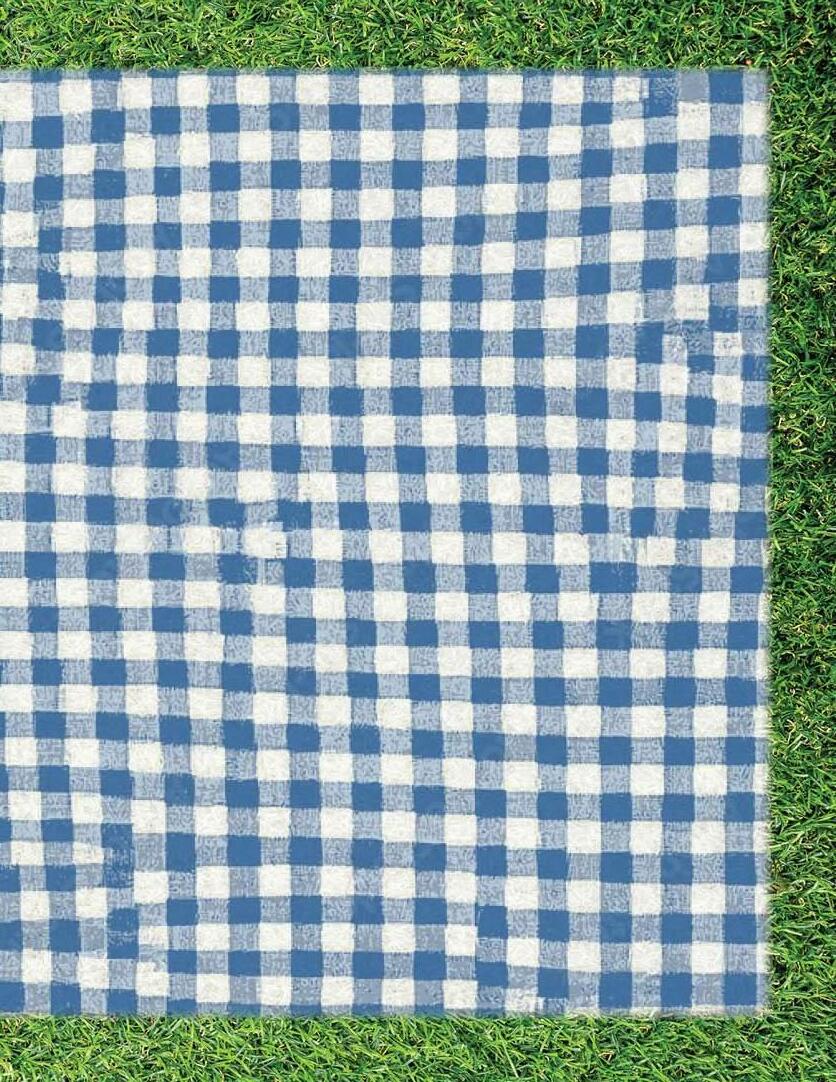
New Song —Maggie Rogers and Del Water Gap
Linger —The Cranberries
Slow Burn — Kacey Musgraves
Fire –– Waxahatchee
Polly –– Whitney
Beautiful Strangers –– Kevin Morby
Go Outside –– Ratboys
Tequila Noon –– Mountain Brews
Duvet — bôa
Kiss Me — Sixpence None the Richer
Chemtrails Over The Country Club — Lana Del Rey
YOURMAG | 81
YMADVISES:
What are three things you would bring to a deserted island?
 ART BY TÉA PEREZ
ART BY TÉA PEREZ
If this question was being asked in a purely practical context, my answers would be a lot different and probably more boring. Luckily, that’s not the case, and I refuse to resort to the typical, obnoxious answers like a flare gun to signal passing ships. So, three things I would bring to a deserted island, mainly because I can’t live without them, would be my copy of Little Women, my stuffed rabbit Lovey that I’ve had since I was born, and finally, my photo album filled with polaroids, prints and family photos. If I am going to die in exile on a deserted island, I at least want to be comforted.
—Isa Luzarraga, Managing Editor
If I was on a deserted island, I would certainly go insane and regret the three things I was given the privilege to bring. But I am not on a deserted island (yet), so I am basing this purely off of what I use to get me through my day-to-day life. Firstly, I will be bringing Grillo’s Pickles because I will obviously get hungry and need the satisfying crunch of a pickle. I will also bring my notebook so I can detail my stay on the island and one day publish it, sell the rights, and see my story depicted as a Hulu mini series. Lastly, I would bring my favorite, most soft blanket, Fluffy. Fluffy is my companion and I am so glad I adopted it from Target.
—Camryn Ciancia, Editor-in-Chief
I don’t quite leave my house/bed enough to get deserted on an island, but if that was the case, I would bring a journal to keep myself from going crazy, a copy of my favorite book at the time, and a Brita water bottle so I can have clean water if I find an oasis of sorts!
—Sara Fergang, Head Proofreader
82 | YOURMAG
If I were on a deserted island, I would, similar to others, bring my special blanket but I would like to add onto what others had said and say I will bring a plastic bag to preserve it in(my blanket is 20 years old and I refuse to let it get ruined at this moment). Secondly, I would like to bring spray paint just because I think it would be cool to mark this island as mine. Lastly, I would bring a cassette recorder, so that I can document my voice and if I don’t make it out alive somebody can hear all of my secrets and stories, but also because I will bring music cassette tapes so I can still listen to music.
—Sofia Verani, Co-YMTV Director
I have actually been thinking about this a lot lately as I’ve been watching so much Survivor. Inspired by the limited clothing you have on the show, here are three things I would bring to wear on a deserted island. First, I would bring my turquoise-colored Crocs. I know there’s probably so much hate coming my way, but these shoes are so versatile with their style, comfort, and waterproof ability. Next, I would bring my knock off Poppy TRIANGL bikini that I’ve had since middle school. It’s still in great condition and gives me the best tan lines. Lastly, I would without a doubt bring my Disney World poncho. With this plus my other two items, I’d be the most sexy survivor on earth.
 —Lily Brown, Creative Director
—Lily Brown, Creative Director
If I were on a deserted island, I would need some form of entertainment to keep me going. I would most likely bring a notebook, a camcorder, and crochet supplies, so I can record my daily adventures, keep track of my routine, and make my own clothing and blankets to keep myself warm. Maybe make a cute hat or bikini or something too, who knows.
—Fiona McMahon, YMTV Co-Director
When I envision myself on a stranded island (which I wouldn’t even make it ashore considering my swimming skills and poor stamina) I’d have to bring my back massager because a realigned spine makes stranded girls fine. Secondly, my after baume from Glossier…I know, but dry skin is a crime and with such little product needed each use it would last a lifetime. Finally, Bellamy, my stuffed giraffe which was gifted to me by a close friend. She serves as a great pillow and one of my favorite confidants.
—Nirvana Ragland, Diversity Chair
YOURMAG | 83

84| YOURMAG
ARTIST STATEMENT: Susie-Jane Wilson
Describe Art by Susie-Jane in one sentence. My work is fluid, honest, and a reflection of myself in some form.

How and when did you get into painting?
I started painting as a kid and begged my parents to put me in as many art classes as possible. I come from a family that is solely athletes, including myself, but somehow got a creative gene mixed in. My family and I don’t fully understand where it came from, but luckily they’re supportive.
What inspires you?
I’m inspired a lot by colors and music. I think those are both things that conjure really natural reactions and gut feelings so it can be really impactful to use those emotions as a jumping-off point. I don’t like to paint specific people, but I enjoy trying to encapsulate specific moments I’ve had with people in the form of portraits. That might be hard to follow, but basically, my portraits are abstract with memories
attached to them, and in turn, they create a character.
Why art?
Art has always been a safe space for me. Whether I’m creating, viewing, curating, or studying it, I feel most in tune with myself. Viewing art is really like looking inside someone else’s heart, mind, or soul, and that is such a privilege as a viewer. I think putting your own art into the world can be a really vulnerable thing, but it means that much more when someone resonates with it.
Who are some of your favorite creators/artists?
My favorite artist forever and ever is Maria Lassnig (she has an exhibit at the MFA right now!!). She was an Austrian artist who created the term “body awareness” in which she painted portraits of bodily sensations and not appearances. My other favorite creators include Robert Mapplethorpe, Mark Rothko, Arshile Gorky, Lauryn Hill, Sade Adu, Lorde, Remi Wolf and Flume.
YOURMAG | 85
What is your favorite piece you’ve made? What makes it special to you?
One of my favorite pieces I’ve made is my multimedia work “Biter.” It’s kind of a weird piece to look at, and I had a lot of fun making it because I didn’t have any plan for it. I was thinking of my older brother during the process and this story about how he used to bite people as a kid so he had to wear a sign that said “I am a biter. I will bite you.” That’s how the character in this portrait’s hair became golden (like my brother’s), the teeth made of gum wrappers (my brother’s silver caps), a look of blood in the mouth, and the title: “Biter.”
What advice would you give other/new creators?
To any creator, I would say try creating something without a perfect plan first. It can be really interesting to see where your mind takes you during the creation of something and getting too caught up in a plan can take away from the experience.
Where do you see yourself in 10 years?
I am aiming to work in fundraising and development for art non-profits and art museums/galleries. Hopefully, in ten years I will have secured a job in that field and will still be making my own pieces.


Where can readers see more of your work?
I have an art Instagram account called @artbysusiejane where I post all my work, take commissions, and sell prints for only $15!!!
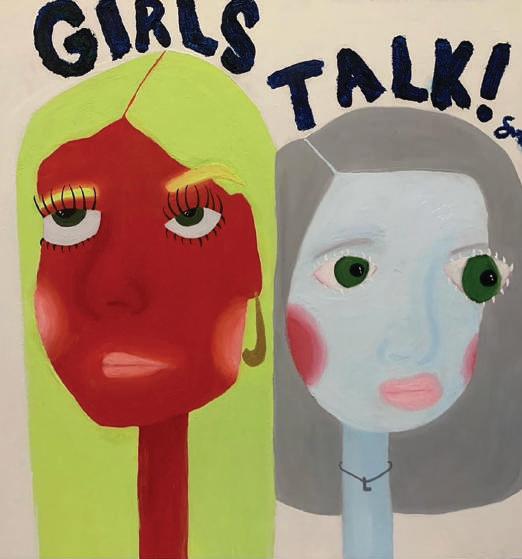
86 | YOURMAG

YOURMAG | 87
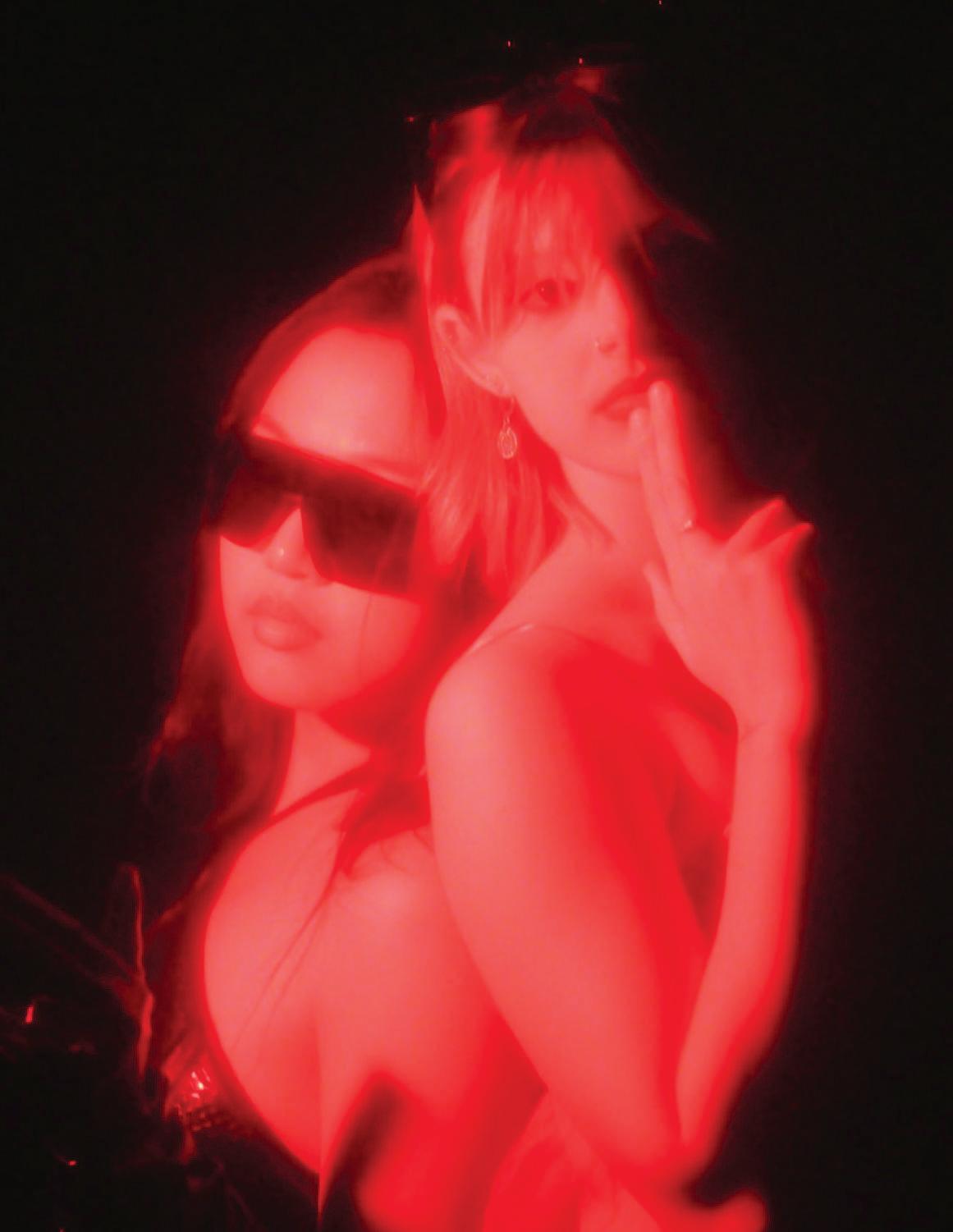
















 DIRECTED BY EMMA CAHILL
PHOTOGRAPHED BY EMMA CAHILL
STYLED BY ANNA BACAL PETERSON
MAKEUP BY SAELA PHILLIPS
MODELED BY MAILEY BAER AND YEA SE CHUN
DIRECTED BY EMMA CAHILL
PHOTOGRAPHED BY EMMA CAHILL
STYLED BY ANNA BACAL PETERSON
MAKEUP BY SAELA PHILLIPS
MODELED BY MAILEY BAER AND YEA SE CHUN













 WRITTEN BY LIZ FARIAS
PHOTOGRAPHED BY LIZ FARIAS
WRITTEN BY LIZ FARIAS
PHOTOGRAPHED BY LIZ FARIAS














 DIRECTED BY LAUREN SMITH, PHOTOGRAPHED BY LILY BROWN, STYLED BY LIZ FARIAS AND JULIA MAGDIZA, MAKE UP BY ANNA BACAL-PETERSON, MODELED BY LIZ FARIAS
DIRECTED BY LAUREN SMITH, PHOTOGRAPHED BY LILY BROWN, STYLED BY LIZ FARIAS AND JULIA MAGDIZA, MAKE UP BY ANNA BACAL-PETERSON, MODELED BY LIZ FARIAS
































 BEACON HILL
BEACON HILL
MUSEUM OF FINE ARTS
JFK LIBRARY
CHARLES RIVER ESPLANADE
BEACON HILL
BEACON HILL
MUSEUM OF FINE ARTS
JFK LIBRARY
CHARLES RIVER ESPLANADE











 CHARLES RIVER
BOSTON HARBOR
FANEUIL HALL
CHARLES RIVER
BOSTON HARBOR
FANEUIL HALL



















 WRITTEN BY KATE RISPOLI
BY BROOKE HOLDER
WRITTEN BY KATE RISPOLI
BY BROOKE HOLDER













































 ART BY TÉA PEREZ
ART BY TÉA PEREZ
 —Lily Brown, Creative Director
—Lily Brown, Creative Director







